microaggression
description: subtle, often unintentional, expressions or behaviors that communicate negative or derogatory messages or assumptions towards members of a marginalized group, typically reflecting underlying prejudices or stereotypes
82 results

The Coddling of the American Mind: How Good Intentions and Bad Ideas Are Setting Up a Generation for Failure
by
Greg Lukianoff
and
Jonathan Haidt
Published 14 Jun 2018
But what would happen if some professors encouraged students to use the distortions in our list above? Microaggressions: The Triumph of Impact Over Intent A prime example of how some professors (and some administrators) encourage mental habits similar to the cognitive distortions is their promotion of the concept of “microaggressions,” popularized in a 2007 article13 by Derald Wing Sue, a professor at Columbia University’s Teachers College. Sue and several colleagues defined microaggressions as “brief and commonplace daily verbal, behavioral, or environmental indignities, whether intentional or unintentional, that communicate hostile, derogatory, or negative racial slights and insults toward people of color.”
…
The potential for offense-taking is almost unlimited. How should you prepare these students to engage with one another in the most productive and beneficial way? Would you give them a day of microaggression training and encourage them to report microaggressions whenever they see them? To go along with that training, would you set up a Bias Response Team—a group of administrators charged with investigating reports of bias, including microaggressions?18 Or would you rather give all students advice on how to be polite and avoid giving accidental or thoughtless offense in a diverse community, along with a day of training in giving one another the benefit of the doubt and interpreting everyone’s actions in ways that elicit the least amount of emotional reactivity?
…
Emotional reasoning is among the most common of all cognitive distortions; most people would be happier and more effective if they did less of it. The term “microaggressions” refers to a way of thinking about brief and commonplace indignities and slights communicated to people of color (and others). Small acts of aggression are real, so the term could be useful, but because the definition includes accidental and unintentional offenses, the word “aggression” is misleading. Using the lens of microaggressions may amplify the pain experienced and the conflict that ensues. (On the other hand, there is nothing “micro” about intentional acts of aggression and bigotry.)

Giving the Devil His Due: Reflections of a Scientific Humanist
by
Michael Shermer
Published 8 Apr 2020
If you want to build a safe space for people who really need it, go to Syria or Somalia. And if this opinion triggers you or makes you feel unsafe, then you haven’t been paying attention to what’s going on in the world. Microaggressions Comments or questions that slight, snub, or insult someone, intentionally or unintentionally, in anything from casual conversation to formal discourse, are now labeled as microaggressions.8 According to the University of California publication Recognizing Microaggressions, examples include (see Figure 6.1 for a full list): Asking, “Where are you from or where were you born?” or “What are you?” This implies someone is not a true American.
…
And as with the problem of trigger words, the list of microaggressions grows, turning normal conversation into a cauldron of potential violations that further restricts speech, encourages divisiveness rather than inclusiveness, and forces people to censor themselves, dissemble, withhold opinion, or outright lie about what they believe. An incident at Brandeis University in 2015 is instructive: When Asian American students installed an exhibition on microaggressions, other Asian American students claimed that the exhibit was itself a microaggression that triggered negative feelings, leading the president to issue an apology to anyone “triggered or hurt by the content of the microaggressions.”10 I agree, blurting out “Why do you Asians always hang out together?”
…
This suggests that the playing field is level, so if women or people of color do not fill all jobs and careers in precise proportion to their population percentages, it must mean that the problem is with them, or that they are lazy or incompetent and just need to work harder.9 Figure 6.1 Tool: Recognizing microaggressions and the messages they send. Reproduced in part, with permission from Sue, D. W., Microaggressions in Everyday Life: Race, Gender and Sexual Orientation, Wiley & Sons, 2010. Yes, language matters, and some comments that people make are cringeworthy (e.g., saying “you people” to a group of African Americans, or “you’re a girl, you don’t have to be good at math”).
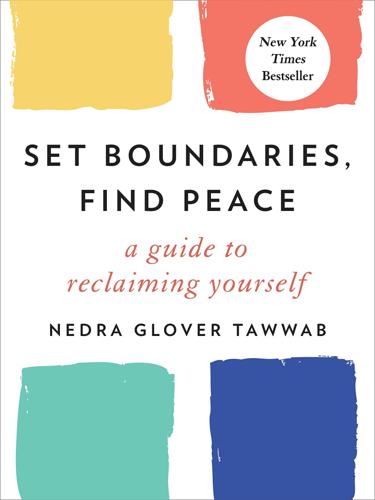
Set Boundaries, Find Peace: A Guide to Reclaiming Yourself
by
Nedra Glover Tawwab
Published 16 Mar 2021
LGBTQI+ Bias Kevin takes his partner to the office holiday party, and Kevin’s coworker says, “I didn’t know you were that way. You don’t act gay.” Underlying issue: Belief that gay men present as feminine. * * * — Microaggressions are considered harmless by the deliverer. However, microaggressions are harmful expressions of a more in-depth belief system. Though seemingly small, they have a huge impact. Ways to Handle Microaggression Assertively address what you perceive as a microaggression: “I notice that you said, ‘I don’t sound Black.’ What does that mean?” Suggest more appropriate behavior. For example, when others call her “bossy,” Tina could point out that she’s simply assertive and willing to lead.
…
Your partner has so many issues, and you need to do a better job of not triggering them. Now that you have a few examples, let’s talk about some common micro- and macroaggressions. Little “b” Microaggressions Microaggressions are subtle and can occur in any relationship. They include passive-aggressive behaviors meant to convey displeasure, hidden messages, or anger toward another. Whether intentionally or unintentionally, microaggressions communicate negativity. In the early stages of her relationship, Jamie’s boyfriend made small comments about how she spoke. Whenever she mispronounced a word or phrase, he mentioned it.
…
New York: Avery Publications, 2018. Coleman, Jackie, and John Coleman. “The Upside of Downtime.” Harvard Business Review, December 6, 2012. https://hbr.org/2012/12/the-upside-of-downtime. Derald Wing Sue, “Microaggressions: More Than Just Race,” Psychology Today, November 17, 2010. https://www.psychologytoday.com/us/blog/microaggressions-in-everyday-life/201011/microaggressions-more-just-race. Emery, Lea Rose. “The First Year of Marriage Is Tough, No Matter How You Spin It.” Brides, November 2019. https://www.brides.com/story/the-first-year-of-marriage-is-tough. Eyal, Nir. Indistractable: How to Control Your Attention and Choose Your Life.

The Identity Trap: A Story of Ideas and Power in Our Time
by
Yascha Mounk
Published 26 Sep 2023
GO TO NOTE REFERENCE IN TEXT sweeping social conflicts: As one influential model puts it, asserting that “we are all Americans” amounts to “denial of the racial experiences of people of color” and “denial of the necessity to take action against racism.” Derald Wing Sue, Microaggressions in Everyday Life (Hoboken, N.J.: John Wiley & Sons, 2020), 38. GO TO NOTE REFERENCE IN TEXT subtle signs of prejudice: For instance, one microaggressions guide from the University of California, Santa Cruz, states that asking, “How did you get so good at math?” communicates that “people of color are generally not as intelligent as Whites.” “Tool: Recognizing Microaggressions and the Messages They Send.” GO TO NOTE REFERENCE IN TEXT report their classmates: Ashe Schow, “University Introduces Website to Report Microaggressions,” Washington Examiner, Feb. 24, 2016, https://www.washingtonexaminer.com/university-introduces-website-to-report-microaggressions.
…
GO TO NOTE REFERENCE IN TEXT “putting my daughters in a class”: Posey, interview with the author, Jan. 2023. GO TO NOTE REFERENCE IN TEXT “racial beings”: For instance, a UCLA guide to recognizing microaggressions asserts the importance of recognizing individuals as “racial/cultural being[s].” “Tool: Recognizing Microaggressions and the Messages They Send,” UCLA, https://web.archive.org/web/20150611163315/https://www.ucop.edu/academic-personnel-programs/_files/seminars/Tool_Recognizing_Microaggressions.pdf. GO TO NOTE REFERENCE IN TEXT doctor was flabbergasted: Jon Levine, “NYC Will Consider Race When Distributing Life-Saving Covid Treatments,” New York Post, Jan. 1, 2022, nypost.com/2022/01/01/nyc-considering-race-in-distributing-life-saving-covid-treatment/.
…
Forscher et al., “A Meta-analysis of Procedures to Change Implicit Measures,” Journal of Personality and Social Psychology 117, no. 3 (2019): 522–59, doi.org/10.1037/pspa0000160. GO TO NOTE REFERENCE IN TEXT paradigmatic examples of a “microaggression”: See, for example, Derald Wing Sue et al., “Racial Microaggressions in Everyday Life: Implications for Clinical Practice,” American Psychologist 62, no. 4 (2007), as well as examples of the application of this idea such as “Tool: Recognizing Microaggressions and the Messages They Send.” GO TO NOTE REFERENCE IN TEXT suffering serious harm: For more on this, see Greg Lukianoff and Jonathan Haidt, The Coddling of the American Mind: How Good Intentions and Bad Ideas Are Setting Up a Generation for Failure (New York: Penguin Press, 2019).
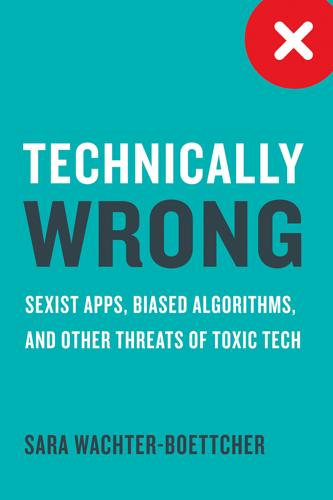
Technically Wrong: Sexist Apps, Biased Algorithms, and Other Threats of Toxic Tech
by
Sara Wachter-Boettcher
Published 9 Oct 2017
“It chips away at you. It works on you the way that water works on rock.” 19 This is why I think of noninclusive forms as parallel to microaggressions: the daily little snubs and slights that marginalized groups face in the world—like when strangers reach out and touch a black woman’s hair. Or when an Asian American is hounded about where they’re really from (no one ever wants to take “Sacramento” as an answer). Lots of people think caring about these microaggressions is a waste of time too: Stop being so sensitive! Everyone’s a victim these days! Those people also tend to be the ones least likely to experience them: white, able-bodied, cisgender men—the same people behind the majority of tech products.
…
That harms users on an individual level: the trans woman who feels alienated by binary gender selectors, the multiracial person who feels erased when they have to choose to express one part of their identity over another, the parent cruelly triggered while grieving the death of their child. But it’s not just a problem of digital microaggressions, of slights and snubs that remind people that they don’t belong or that their experiences don’t matter. It’s also the way they reinforce biases and embolden bad behavior in the rest of the population. Culture doesn’t just inform technology and design. Technology and design also, increasingly, inform culture.
…
See personal data; proxy data; training data data brokers, 101–104 Data Detox Kit, 102–103 DAUs (daily active users) metric, 74, 97–98 default settings and “average” users, 38–39 bias in, 35–38, 61 and cultural norms, 198 default effect, 34, 65 defined, 34–35 and Facebook, 108–109 and gender of game avatars, 35–36 and marginalized populations, 37, 66 and Uber’s location tracking, 106, 108 Delano, Maggie, 28–31, 33 delight, 8, 79, 90, 93–94, 96 democracy, and tech industry, 9–10, 149, 154, 165–166 demographics, and development of personas, 45–47 deportations, 195, 200 design aesthetics, 143–144 Design for Real Life (Meyer and Wachter-Boettcher), 40, 64, 96 design teams and “average” users, 38–40, 44, 47 and default settings, 34–35 and delight, 94 devaluing of women’s roles in, 21 and diversity/performance correlation, 184–186 and form fields, 49–51 and Glow app, 30 and ill-considered Twitter updates, 160 and inattentional blindness, 95–97 lack of diversity in, 11, 14, 16–17, 20, 28, 35 and personas, 28, 32–33, 44 and photo autotagging, 136 software reflecting values of, 149–150 and stress cases, 40–44, 90, 96 and Year in Review Facebook feature, 5 Deszö, Cristian, 186 digital forms and collection of gender information, 62–66 and cultural norms, 198 definition of, 51–52 demanding accountability in, 75 microaggressions in, 70–73 Nextdoor’s Crime and Safety report, 67–71, 71, 73–74 and problems with personal names, 40, 52–59, 72, 75 and racial bias, 50, 59–62 and sexual abuse, 49–50 and titles, 66–67, 71 Disney, 158 disruption, tech industry’s desire for, 8–9, 150, 184, 191–192 diversity. See also gender bias; racial bias companies’ efforts to improve, 22–26, 182–184 correlation with performance, 184–186 in design teams, 11, 14, 16–17, 20, 28, 35 and Facebook, 19, 21–22, 23–25 and innovation, 186 and Slack, 190–191 tech industry’s lack of, 9, 11, 14, 16, 18–20, 116, 135–136, 150, 157–158, 169, 171–176, 182, 196 and Twitter, 155–156 Dorsey, Jack, 155–156 edge cases, 38–40, 50, 137 Electronic Frontier Foundation, 108 The End of Average (Rose), 38–39 engagement, as goal of interaction design, 74 ethics at Facebook, 172 and Gamergate, 157 and meritocracy of tech, 176, 189 and racial bias on Nextdoor, 74 and tech products’ ethical blunders, 6, 13, 26, 199 at Uber, 108, 180, 187, 191–192 Etsy, 32–33, 32 Eve by Glow app, 31, 31, 33 Eveleth, Rose, 137 Facebook and Americans’ online status, 2 artificial intelligence feature, 171 and cares about us metric, 97 collection of gender information by, 63–66, 63, 64 creators’ values and biases, 168–172 and data brokers, 104 default privacy settings, 108–109 and fake news, 165–166, 199 Friends Day feature, 84–85 and gender of profile picture avatars, 36 and the Hacker Way, 170–171 and Halloween icons, 80 and journalism industry, 199 Moments feature, 85, 97 News Feed feature, 144, 168–169 On This Day feature, 83–84, 97 and presidential election of 2016, 10 problems with personal names, 53–59, 75 and proxy data use, 112 and selection of ads users see, 10 Trending feature, 149, 165–169, 172 and value of user data, 97 What Facebook Thinks You Like browser extension, 103 and workforce diversity, 19, 21–22, 23–25 Year in Review feature, 4–6, 5, 79, 83 facial-recognition software, 137 Fairness, Accountability, and Transparency in Machine Learning (FAT/ML), 128 fairness criteria, 127–128, 136 Fake, Caterina, 171–172 fake news stories, 10, 149, 165–166, 170, 199 Ferguson, Missouri protests, 163, 166 fertility, and menstrual tracking apps, 28–30, 33 financial performance, and diversity, 186 Fisher, Carrie, 148 Flickr, 135, 155, 171 forms.

The Authoritarian Moment: How the Left Weaponized America's Institutions Against Dissent
by
Ben Shapiro
Published 26 Jul 2021
Thus, the Left has posited that even minor offense amounts to profound damage—hence the language of “microaggressions,” which posit by their very nature that verbiage is an act of violence. Microaggressions range from the utterly anodyne (“Where are you from?” is apparently a brutal act, since it presupposes that the subject of the question is of foreign extraction) to the extraordinarily counterproductive (references to “meritocracy” are deeply wounding, since they presuppose that free systems reward hard work, thus condemning the unsuccessful by implication). Microaggressions require no intent—intent is not an element of the crime, since we may not be aware, thanks to our “implicit bias,” of our own bigotry.
…
Microaggressions require no intent—intent is not an element of the crime, since we may not be aware, thanks to our “implicit bias,” of our own bigotry. They do not even require actual evidence of harm. Subjective perception of offense is quite enough. The culture of microaggression is about magnifying claims of harm in order to gain leverage. That leverage can grow to astonishing proportions: woke staffers got a reporter for The New York Times fired for using the n-word to explain why and when using the n-word was wrong. Times executive editor Dean Baquet even repeated the authoritarian Left’s favorite mantra: “We do not tolerate racist language regardless of intent.”
…
It is a moral system built on anti-conventionalism—on the belief that its expositors are the sole beacons of light in the moral universe, and therefore justifiable in their revolutionary aggression and top-down censorship. To be deemed anti-racist, for example, one must take courses with Robin DiAngelo, participate in Maoist struggle sessions, and always—always—mirror the prevailing woke ideas. To fail to do so is to be categorized as undesirable. All “microaggressions” must be spotted. All heresies must be outed. And all logical consistency—even basic decency itself—must be put aside in the name of the greater good. As Kendi puts it, “The only remedy to racist discrimination is antiracist discrimination. The only remedy to past discrimination is present discrimination.
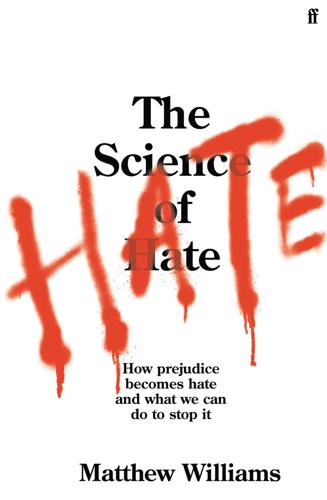
The Science of Hate: How Prejudice Becomes Hate and What We Can Do to Stop It
by
Matthew Williams
Published 23 Mar 2021
In this book I borrow the use of the term race from the research and policy work that I include, but I do not support its use in a scientific way that attempts to ascribe inherent differences between populations. ‡ The term micro-aggression describes words and/or behaviours that result in unintentional discrimination against an outgroup. In addition to micro-assaults, micro-aggressions can include micro-insults: words, conversations or actions (often unconscious) that are rude and insensitive, but are not explicit (e.g. asking a disabled person how they got a job over an able-bodied person); and micro-invalidation: words, conversations or actions that exclude based on identity (e.g. a white person asking a UK-born Asian person where they are ‘really’ from, or a white person saying to a black person ‘I don’t see colour’, negating the importance of their identity and heritage).
…
.† Today many governments continue to discriminate against parts of their populations, including at least sixty-eight countries (at the time of writing) that make it criminal to engage in same-sex relations, with the death penalty still in place in some for those caught doing so.12 The discrimination stage is also accompanied by subtle forms of aggression. In using their privilege to exercise power over the outgroup, the dominant group frequently commit verbal and behavioural micro-aggressions.‡ These include micro-assaults that are explicit and target the identity of the outgroup. The fourth stage, Physical Attack, is the conscious extension of the behaviours found in the previous stages to full-blown aggression. The physical violence may not be tolerated under the law of the country or state in question, but authority figures are likely to turn a blind eye.
…
In addition to micro-assaults, micro-aggressions can include micro-insults: words, conversations or actions (often unconscious) that are rude and insensitive, but are not explicit (e.g. asking a disabled person how they got a job over an able-bodied person); and micro-invalidation: words, conversations or actions that exclude based on identity (e.g. a white person asking a UK-born Asian person where they are ‘really’ from, or a white person saying to a black person ‘I don’t see colour’, negating the importance of their identity and heritage). These are more common to stage 1: Antilocution. D. W. Sue, ‘Racial Microaggressions in Everyday Life: Implications for Clinical Practice’, American Psychologist 62 (2007), 271–86. § The names of the other victims were kept off the public record by police, who claimed they were sparing the families any shame from being associated with a disabled relative. I feel that not publicly acknowledging the victims only serves to support the murderer’s hateful aim and further entrenches the ‘otherness’ of disabled people in Japan. 2 Hate Counts Eudy On 27 April 2008, thirty-one-year-old Eudy Simelane was celebrating with friends in the Noge Tavern in KwaThema township, South Africa.
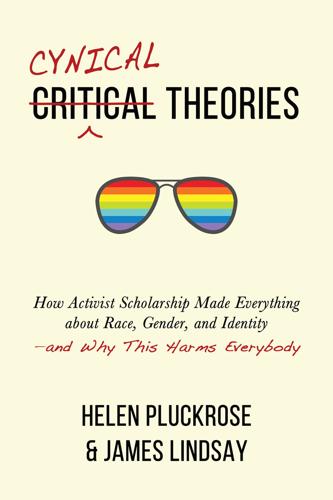
Cynical Theories: How Activist Scholarship Made Everything About Race, Gender, and Identity―and Why This Harms Everybody
by
Helen Pluckrose
and
James A. Lindsay
Published 14 Jul 2020
For example, many films are watched “closely” for problematic portrayals and then disparaged, even if their themes are broadly consistent with Social Justice.32 Additionally, the idea that words are powerful and dangerous has now become widespread and underlies much scholarship and activism around discursive (or verbal) violence, safe spaces, microaggressions, and trigger warnings. 3. Cultural Relativism Cultural relativism is, of course, most pronounced in postcolonial Theory, but the widespread use of intersectionality in Social Justice scholarship and activism and the understanding of the West as the pinnacle of an oppressive power structure have made cultural relativism a norm in all applied postmodern Theories.
…
Also, their supposedly empirical analyses of material reality, which usually find that racism and discrimination are not decreasing at all, can look a great deal like cherry-picking and generalizing from the worst examples. Though the materialists’ pessimism persisted, their approach did not. Materialists dominated the critical race movement from the 1970s to the 1980s; but, from the 1990s, postmodernists were increasingly in the ascendant. Over time, the postmodernists came to focus on microaggressions, hate speech, safe spaces, cultural appropriation, implicit association tests, media representation, “whiteness,” and all the now familiar trappings of current racial discourse.17 This change owes much to the influence of a number of female critical Theorists who gained prominence in the late 1980s and 1990s and promoted radical black feminist thought, including bell hooks, Audre Lorde, and Patricia Hill Collins.
…
Two important books, both published in 2018, address the causes, manifestations, and potential dangers of these social changes. They are The Coddling of the American Mind: How Good Intentions and Bad Ideas Are Setting Up a Generation for Failure 68 by Greg Lukianoff and Jonathan Haidt and The Rise of Victimhood Culture: Microaggressions, Safe Spaces, and the New Culture Wars 69 by Bradley Campbell and Jason Manning. Lukianoff and Haidt focus on psychology and Campbell and Manning on sociology, but their approaches are complementary. These are different aspects of the same phenomenon. In The Coddling of the American Mind, Lukianoff and Haidt chart a dramatic decrease in young people’s resilience and ability to cope with difficult ideas and hurt feelings.
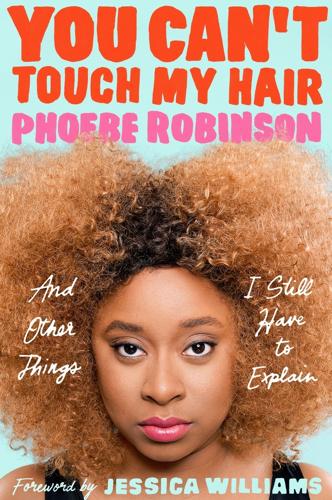
You Can't Touch My Hair: And Other Things I Still Have to Explain
by
Phoebe Robinson
Published 3 Oct 2016
Additionally, the UK’s The Guardian newspaper published research from the Equality and Human Rights Commission (EHRC) stating that “police forces are up to 28 times more likely to use stop-and-search powers against black people than white people and may be breaking the law” to do so. While these incidents are devastating, the average person experiences racism in lesser life-threatening ways. Micro-aggressions, or slights/snubs/insults, that reinforce marginalization of a particular group are the more common way that racism manifests on a daily basis. Normally, my run-ins with racism come in the form of jokes that I “talk white” or that I’m not like “other black people,” as if that is some sort of compliment.
…
All of those are, unfortunately, standard-issue, and while they are upsetting in the moment, I tend to use that mixture of anger and sadness to propel me forward. I would have run out of tears a loooong time ago if I let every time someone was racist toward me devastate me. Still, even though I’m fairly used to micro-aggressions, there are those occasional situations that manage to surprise me, and not the “I found a $20 bill in a winter-coat pocket” good type of surprise. I’m talking like the “Aunt Flo decided to visit when I just put on a brand-new pair of my Victoria’s Secret five-for-$25” type of bad surprise, as was the case with my recent Uber ride.
…
Now, getting shitty customer service at the frames department in an arts-and-crafts store is pretty much the crux of #MiddleClassProblems, especially in comparison to how black people were treated fifty years ago. But just because this slight by the Michaels employee doesn’t register high on the racism Richter scale doesn’t mean it’s something to ignore. Micro-aggressions like this accumulate over days, weeks, months, and they shape my experience as a black person. And this is not to say there aren’t many wonderful things about being black. There are, and a lot of them have been absorbed by pop culture—fashion, music, food—but still, there are tons of things about being #TeamMelanin that blow.

Word by Word: The Secret Life of Dictionaries
by
Kory Stamper
Published 14 Mar 2017
It didn’t even have a “disparaging” label, I told her. She answered, “Ohhhh, oh God.” We had started the conversation talking about the word “microaggression.” It’s a relatively new term that refers to the small slights or comments directed particularly at a member of a minority group that could be perceived as inconsequential but are in fact some sort of attack. Mansplaining is often seen as a type of microaggression: a woman can never have the last word, even on something that she’s the expert on. Jane had been tasked with defining “microaggression” for one of the online dictionaries she worked on, and we had been talking about the difficulty of getting rid of unconscious editorial bias in definitions that touched on sensitive issues, like “microaggression.”
…
Jane had been tasked with defining “microaggression” for one of the online dictionaries she worked on, and we had been talking about the difficulty of getting rid of unconscious editorial bias in definitions that touched on sensitive issues, like “microaggression.” She went back and forth with the editor reviewing her entry; Jane had run the definition by a friend who was a civil rights activist to make sure that she had gotten a good grasp on the word’s denotative and connotative meaning. But the edits made to her definition were from what she considered to be “a rich, white perspective, unfortunately.” Her editor had changed the force of the definition so that the word “microaggression” referred to comments that were merely perceived to be offensive. “But, no,” she said, “they’re just offensive—but offensive in a way that’s not always obvious to the person who is perpetrating the offense.”
…
“But, no,” she said, “they’re just offensive—but offensive in a way that’s not always obvious to the person who is perpetrating the offense.” The problem that lexicographers face with a reclaimed word like “bitch” is the same problem that Jane’s struggle with the definition of “microaggression” is, just writ large. The force of the word’s full meaning is contained in something that lexicographers can’t measure: the interplay between intention and reception. What’s more important: the intention of the speaker or the reception by the hearer? If I walk down the street and hear a man I do not know, hanging out of his car window, yell, “Nice, bitch!”

The Constitution of Knowledge: A Defense of Truth
by
Jonathan Rauch
Published 21 Jun 2021
Catherine Rampell, “Political Correctness Devours Yet Another College, Fighting over Mini-Sombreros,” Washington Post, March 3, 2016. 32. Those phrases are among many identified as racial microaggressions in the pioneering article on the subject by Derald Wing Sue, Christina M. Capodilupo, Gina C. Torino, Jennifer M. Bucceri, Aisha M. B. Holder, Kevin L. Nadal, and Marta Esquilin, “Racial Microaggressions in Everyday Life: Implications for Clinical Practice,” American Psychologist 62, no. 4 (May–June 2007). 33. See Julio Rosas at https://twitter.com/Julio_Rosas11/status/1182493159449907200?
…
Two members of Bowdoin College’s student government faced impeachment proceedings because they attended a party where some guests wore tiny sombreros. In condemning the transgressors, the student government said it stood by “all students who were injured” because the incident had “create[d] an environment where students of color, particularly Latino, and especially Mexican … feel unsafe.”31 The concept of microaggressions turned life’s everyday misunderstandings and faux pas into rights violations and traumas, reinterpreting ordinary interactions as assaults and encompassing—well, anything, including such statements as “Where are you from?” and “I believe the most qualified person should get the job.”32 Emotional safetyism trivializes physical violence.
…
Demoralization is demobilization. At bottom, individuals must decide whether to submit, and so the most important thing to say to individuals is this: don’t be a snowflake. In the culture wars, the term “snowflake” originally caught on among conservatives to mock students who profess to be traumatized by microaggressions and Halloween costumes. The term is not particularly accurate, though. Some student activists are coddled and fragile, no doubt, but many express their moral values with passion and sometimes bravery. In 2017, after students at Middlebury College were criticized for disrupting a speech by a conservative scholar, some of them wrote that the protesters “did not believe that registering respectful disagreement was enough.

The Class Ceiling: Why It Pays to Be Privileged
by
Sam Friedman
and
Daniel Laurison
Published 28 Jan 2019
For example, while there are class-origin pay differences across top jobs and within three of the fields we studied, we did not find any evidence that people from different class backgrounds were doing the same work for unequal pay. Having said that, there were multiple examples of what we might call ‘microaggressions’ 224 Conclusion – of people’s working-class accents being mocked by colleagues or jokes being made about ‘chavs’19 or other stereotypes of the working class. These microaggressions were most marked in acting, as explored in Chapter Eight, particularly during auditions where, as Ray noted, “people just make a snap judgement about you”. As Grace recalled, “Someone asked me once whether I could speak ‘properly’ if I wanted to.
…
Support those who want it Our results reveal that those from working-class backgrounds often self-eliminate from pushing forward in their careers, or sort into less prestigious or lucrative specialisms. This is rarely about a lack of ambition. As we have shown, it is more to do with rejecting expectations to assimilate, battling feelings of ‘otherness’ or negotiating low-level but constant microaggressions in the workplace. These issues should be approached sensitively. At present we believe the dominant narrative about socio-economic diversity tends to misinterpret self-elimination through the lens of individual deficit (“there are less advantaged people out there who lack certain attributes, who need our help to succeed”).
…
In other work, Rollock et al (2011), Rollock (2015) and Wallace (2016) have explored how the cultural capital possessed by Black communities in Britain are often misrepresented and invalidated in educational and occupational environments by dominant white gatekeepers based on their stereotyped classed assumptions of Blackness. This kind of reaction – leaning forward, which could be interpreted as simply listening attentively – when reserved for only certain people or members 303 The Class Ceiling 30 31 32 33 34 35 36 37 38 39 40 of certain groups, can be interpreted as a form of ‘microaggression’. This is a kind of interaction that is not on the face of it overtly discriminatory or hostile, but nonetheless lets the recipient know that they are different and don’t quite belong (Basford et al, 2014). The sociologist Maliq Matthew, writing on Twitter, captured this process with the apt quote: ‘Well-intentioned people often perpetuate systems of inequality with no malice, yet full effect.’
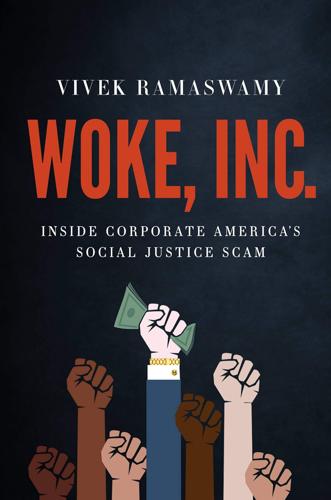
Woke, Inc: Inside Corporate America's Social Justice Scam
by
Vivek Ramaswamy
Published 16 Aug 2021
So while “stay woke” started as a remark black people would say to remind each other to be alert to racism, it would now be perfectly normal for white coastal suburbanites to say it to remind each other to watch out for possible microaggressions against, say, transgender people—for example, accidentally calling someone by their pre-transition name. In woke terminology, that forbidden practice would be called “deadnaming,” and “microaggression” means a small offense that causes a lot of harm when done widely. If someone committed a microaggression against black transgender people, we enter the world of “intersectionality,” where identity politics is applied to someone who has intersecting minority identities and its rules get complicated.
…
Then it gives them the reasons they’re looking for. The Church of Diversity knows that it’s not enough to rule through fear; it has to offer salvation, too. “See privilege everywhere,” it promises, “and you will understand truth.” You will see the web of power that underlies all ordinary interactions, the microaggressions hidden beneath good intentions—you will see colonialism in holiday greetings, patriarchy in pronouns, and systemic racism in filibusters and highways. Feed men and offer them miracles, the Grand Inquisitor says, and then you can rule all the Earth. In the third temptation, the devil offered Christ dominion over everything, and with the advent of woke capitalism, this is the stage the Church of Diversity is currently in.
…
Like any other religion, being woke isn’t supposed to be a narrow, one-off commitment—it’s supposed to be a way of life. It gives its believers purpose and meaning. It’s the structure that they use to make sense of the universe. Where a nonwoke person sees ordinary interactions, for instance, a disciple of wokeness sees microaggressions. Just as a Christian sees God’s hand in all of Creation, someone who’s woke sees the guiding hand of identity-based power relations everywhere they look. Being a religion comes with legal costs and benefits. My analysis implies that an employee should be legally protected for expressing woke beliefs outside work and have those beliefs accommodated at it, just like any other religious beliefs.

Please Don't Sit on My Bed in Your Outside Clothes: Essays
by
Phoebe Robinson
Published 14 Oct 2021
In all seriousness, we don’t get shown enough how freeing, enriching, fascinating, influential, and informative traveling can be because, according to society, we’re not supposed to explore or have full lives the way white people do. Instead, the most we should aspire to is middle-class suburbia, where we tolerate macro- and microaggressions that are the by-product of having “made it,” such as a passive-aggressive neighbor who notices your grass is a few inches higher than usual, so they put a pamphlet in your mailbox as a gentle reminder about the neighborhood rules on acceptable lawn height. Yes, this did happen to my brother, Phil, and yes, the neighbor who did this to him is white.
…
It announced its arrival in a two-minute-plus video chock-full of and only featuring very privileged white actors who shot themselves exclusively in black and white like it’s a whack-ass French New Wave film to show they are “really sad and care deeply,” but not too deeply, because half of them are lifelessly reading off a sheet of paper.* It’s like they JUST REALIZED IN 2020 that racism, unchecked microaggressions, and Black people being murdered is HAPPENING and they want to now speak out because Black people are their neighbors (Bitch, where? Not your zip code), are their friends (lolz, I saw your Christmas party pictures you posted on social media, and the only Black people in attendance are faintly in the background, serving potato croquettes), and are their family (your immediate and extended family is literally just blond hair, blue eyes, and white skin, but go off on how we all fam).
…
And I don’t mean this in some Pollyanna “We’re so in love that it never dawned on us that because of the color of our skin, racism could enter our love bubble” way. Rather, what I mean is that it’s one thing to have sociopolitical discussions with our respective families or vent my frustrations about a microaggression that transpired at work, but it’s another to spend several weeks together with a motorcade of NYPD vehicles patrolling up and down the street you live on at all hours of the day and night. And while they may claim that they’re just doing their job, I know the unsaid truth: Their presence was designed to make sure I didn’t feel completely at ease in my home or neighborhood, whereas to Baekoff, the motorcade was absurd and an abuse of power, but he did not fear for his safety, did not have paranoid ideations that maybe he’s next while making a cup of tea, and did not speculate if the police were doing the very same thing at that moment in his brother’s neighborhood, the way I did about my brother.

The People vs. Democracy: Why Our Freedom Is in Danger and How to Save It
by
Yascha Mounk
Published 15 Feb 2018
These 9 Answers Reveal Its Harm,” Everyday Feminism, June 14, 2015, http://everydayfeminism.com/2015/06/cultural-appropriation-wrong/. On microaggressions see Miguel Ceja and Tara Yosso, “Critical Race Theory, Racial Microaggressions and Campus Racial Climate: The Experiences of African American College Students,” Journal of Negro Education 69 (2000): 60–73; Daniel Solórzano, “Critical Race Theory, Race, and Gender Microaggressions, and the Experience of Chicana and Chicano Scholars,” International Journal of Qualitative Studies in Education 11 (1998): 121–136; and Kevin L. Nadal, That’s So Gay! Microaggressions and the Lesbian, Gay, Bisexual, and Transgender Community (Washington, DC: American Psychological Association, 2013).
…
If much of popular culture ignores or demeans ethnic and religious minorities, they claim, then insensitive portrayals of people of color, or instances of what has come to be called cultural appropriation, should be aggressively shamed. If free speech is invoked as a reason to defend a public discourse that is full of overt forms of racism and microaggressions, then this hallowed principle needs to be sacrificed to the cause of racial justice.23 If laws that claim to be color blind can discriminate against people of color on such a consistent basis, then race and identity should be put at the heart of the legal system. And if appeals to common citizenship and the universal principles of the Constitution are so often disingenuous, then the tropes and trappings of American identity should be shunned.
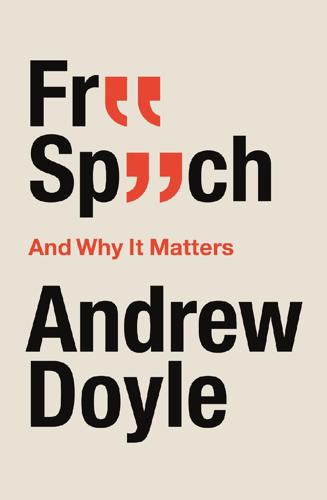
Free Speech And Why It Matters
by
Andrew Doyle
Published 24 Feb 2021
p.89intention to cause offence: One of the more disturbing aspects of the authoritarian drift of recent years has been the suggestion that intention should be disregarded in circumstances in which someone has taken offence. The new discourse of ‘microaggressions’ – unthinking comments that occur in day-to-day interactions which can be insensitive to marginalised groups – has had the effect of promoting the idea that ‘aggression’ is unrelated to intent. Such a view completely destabilises our view of morality, and can be advanced to justify draconian strictures on speech. See for instance Anna Liu’s comment in her article ‘No You’re Not Imagining It: 3 Ways Racial Microaggressions Sneak into Our Lives’ for Everyday Feminism (25 February 2015): ‘It’s important for us to remember that just because a perpetrator of racism is clueless (or in denial) about the impact of their words, doesn’t mean that their actions were any less violent or that the impact of that violence is changed.
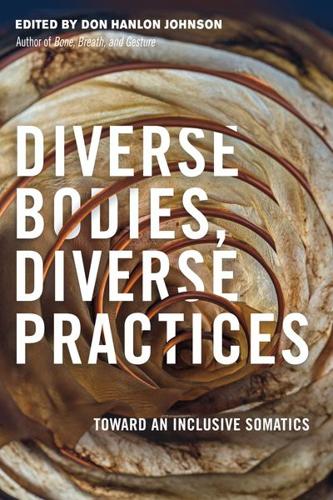
Diverse Bodies, Diverse Practices: Toward an Inclusive Somatics
by
Don Hanlon Johnson
Published 10 Sep 2018
One author in this volume, Nick Walker, is an autistic person who found himself growing up among caregivers who had no real sense of how he experienced the world. Another chapter is by Jules Pashall, a fat person who, from infancy, was faced with a culture that shamed them. Other chapters recount the struggles of people who are born at the intersections of cultures and ethnicities, where healing and microaggressions were mixed. In my case, a congenital spinal dysfunction spurred a long history of being charged with stiffness and rigidity by people who thought of themselves as highly skilled in “body-reading.” What brings us together is that we share a focus on how an emphasis on our bodily, nonverbal, subverbal, and preverbal worlds of experience has enabled us to move out of our isolations into communities of learning and service.
…
It is one of the ways I employ my privilege toward social change. 3 Audre Lorde, Sister Outsider: Essays and Speeches (Berkeley CA: Crossing Press, 2007). Who Am I? Questions of Lineage While race is a social construct, it is so deeply entrenched into this country’s existence that it cannot be ignored. Unless you’re white and therefore normal and therefore have the choice to ignore the realities of injustice, oppression, prejudice, and microaggressions inherent to the lived experiences of people of color. This is a function of white privilege. Of course, privilege is complex and varies across the intersections of one’s identity. So, my thoughts are only a piece of a larger conversation. Yet ignorance is a choice. For one to say that they don’t see color means to say that they don’t acknowledge the reality of this country’s history of immeasurable violence against people of color.
…
It allowed for deep intimacy with my activist community; it allowed me to not be isolated or vulnerable. I was able to rage and grieve collectively, which was powerful healing of my soul and a mighty push against colonialism. Accessing Length through Bahala Na Growing up, my family would often exclaim “bahala na” when we were faced with multiple and compounding racist episodes from microaggressions such as being refused service at a restaurant to structural racism such as the constant threat of losing jobs or housing. They told me that it means, “Leave it to God,” which used to infuriate me. It felt like we were giving up and not demanding justice and accountability. Through indigenous psychology, I realized how wrong I was to be angry with them.
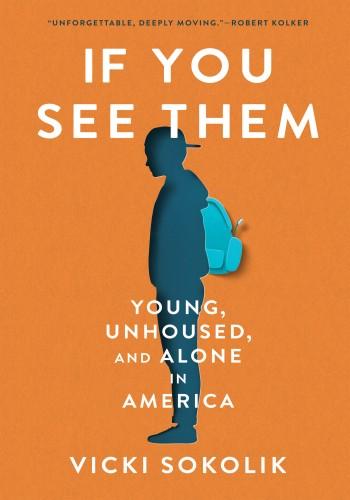
If You See Them
by
Vicki Sokolik
Published 23 Nov 2023
Safe Spaces 107 LGBTQ youth are significantly overrepresented in homeless populations: “Homelessness and Housing,” Youth.gov, n.d., https://youth.gov/youth-topics/lgbtq-youth/homelessness. 107 LGBTQ youth are more than twice as likely to experience homelessness: Ibid. 107 LGBTQ youth are also at a greater risk for suicide: “Facts About LGBTQ Youth Suicide,” The Trevor Project, December 15, 2021, https://www.thetrevorproject.org/resources/article/facts-about-lgbtq-youth-suicide/. 107 LGBTQ youth who experience housing instability attempt suicide at more than three times the rate: “Unstable Housing and LGBTQ Youth Suicidality,” The Trevor Project, August 28, 2019, https://www.thetrevorproject.org/research-briefs/unstable-housing-and-lgbtq-youth-suicidality/. 107 a store owner following a customer of color around the store: “Tool: Recognizing Microaggressions and the Messages They Send,” adapted from Derald Wing Sue, Microaggressions in Everyday Life: Race, Gender, and Sexual Orientation, Wiley, 2010, https://academicaffairs.ucsc.edu/events/documents/Microaggressions_Examples_Arial_2014_11_12.pdf. 16. Shaq 114 it’s a permanent dismissal from the school district: Student Code of Conduct & Resource Guide, Hillsborough County Public Schools, 2021–2022, https://www.hillsboroughschools.org/cms/lib/FL50000635/Centricity/Domain/136/HCPS%20Student%20Code%20of%20Conduct%202122.pdf. 18.
…
Safe-space discussions are opportunities to learn about diverse identities and examine prejudice, assumptions, and privilege. Maggie points out that regardless of how we personally feel about different identities, we can all agree that at SRN, we want everyone to feel safe. Maggie introduces the concept of microaggressions, everyday verbal and nonverbal communications, whether intentional or unintentional, that express negative messages to persons based solely on their identities. She provides examples: a store owner following a customer of color around the store or asking a job applicant to choose between “male” or “female” when filling out a form.

How to Work Without Losing Your Mind
by
Cate Sevilla
Published 14 Jan 2021
How can your staff prioritize time management when you clearly have no clue what’s going on with your own schedule? The manner in which managers speak to their staff is also crucial. Bullying may not always be so blatant and obvious as it is portrayed on TV and in films, but it’s the underhand threats and micro-aggressions that can wear people down. Particularly when the issues being played out are nuanced – such as specific cultural stereotypes and understandings between people of colour. Marianne, thirty-one, a queer, mixed-race woman, described the complex relationship she had with her direct manager while working as a teacher at a high school in northern California.
…
You shouldn’t just have to ‘suck it up’ or ‘not worry about it so much’ or ‘just get on with it’ if you’re finding that dealing with your difficult manager is negatively affecting your mental health, and ability to do your job. In isolation, incidents like the Post-it don’t seem that bad, but these micro-aggressions build up. Just as a glass of water doesn’t seem that heavy at first, if you have to hold it for hours, days and sometimes years, this small burden, this constant low-level anxiety, becomes a weight heavier than we can bear. How to deal with a difficult manager There is no one-size-fits-all fix for your manager.
…
According to the research done by the Lean In organization, which champions women’s rights in the workplace, black women and women with disabilities face more barriers to advancement in the companies they work for, get less support from their managers and receive less sponsorship than other groups of women.2 This, combined with everyday discrimination, sexism and no doubt plenty of micro-aggressions – means that the stress and impact on the mental health of these women will be worse than the average work stress of their white colleagues. This isn’t to dismiss the pain or experiences of anyone, but rather to acknowledge that none of our experiences are the same, and that there are very real and concrete reasons why some women will experience different layers of work stress than others.
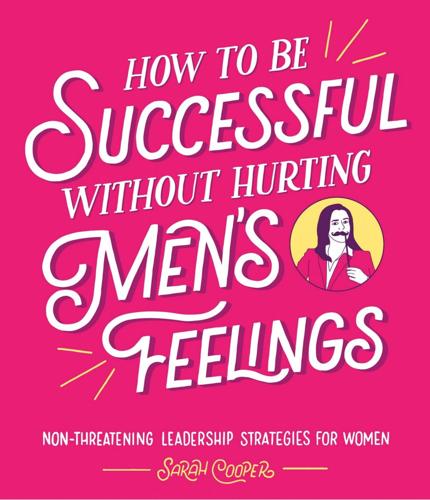
How to Be Successful Without Hurting Men’s Feelings: Non-Threatening Leadership Strategies for Women
by
Sarah Cooper
Published 1 Nov 2018
A) CUBICLES: Avoid staying at your desk for too long where you could become the target of unwanted massages B) PRINTER: Try converting the printer into a standing desk so you can remain where everyone can see you C) BREAK ROOM: Keep your trips to the break room speedy so you don’t find yourself cornered in there D) CONFERENCE ROOM: Thankfully, in large conference rooms you’ll usually only experience microaggressions E) BATHROOM: The very last stall in the bathroom is a safe place to hide and cry F) RECEPTION: You can always count on witnesses here (unless you are the receptionist) G) SUPPLY CLOSET: Never go into the supply closet with Kenny. He will say he needs a plunger, but there are no plungers there, and I don’t even think he works here anymore H) OFFSITE: Company offsites are great for grabbing a drink with your team and bonding through repeated harassment Harassment Survival Kit Here’s a cheat sheet of responses to keep handy for the everyday physical harassment you might experience.
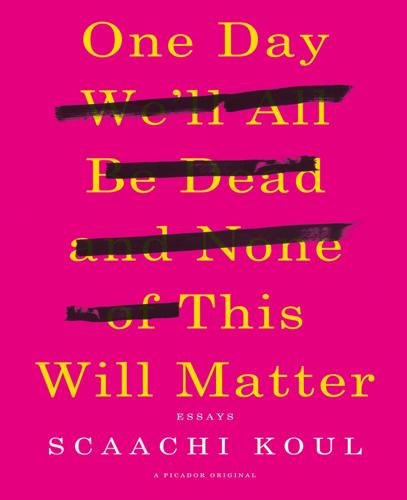
One Day We'll All Be Dead and None of This Will Matter
by
Scaachi Koul
Published 7 Mar 2017
With that answer, their faces would light up and they’d say, “Oh, I hear India is amazing! Does your mom make curry?” Then I would shrug and say, yeah, sure, I guess she does, but isn’t that like me asking if your mom boils water? My race didn’t seem like a problem until 9/11, or at least, I never noticed a difference beyond forgettable microaggressions. I watched the towers come down while pulling my socks up in the living room, getting ready for school. Mom sat stock-still, watching in horror, and I remember this only because it was the first time she wasn’t rushing me to catch the bus. She sat in the living room on the coffee table, a wooden spoon held aloft, her face frozen in fear.
…
When I’m bored, I sometimes draw three dots in a triangle formation on my hand, the same design my mother used to draw in eyeliner on my chin when my Indian dance class had a performance. It’s the only place I feel comfortable now. “Some kids know,” she said. “I don’t need to tell everyone.” When I talk to Papa about the microaggressions I deal with in my city (“The lady at Starbucks thought my name was Vissagi, and now she keeps writing ‘Vissagi’ on aaaaaall myyy cuuuuups”), he rolls his eyes because he’s seen worse. My dad can’t pass for white—he is the darkest in the family, with the most Indian nose—so my coffee-cup issue is hardly a problem for him.

Greater: Britain After the Storm
by
Penny Mordaunt
and
Chris Lewis
Published 19 May 2021
They experience greater levels of undermining behaviour, micro-aggressions and racial harassment. Such behaviour damages self-esteem and confidence, affects learning, and contributes to the ethnic attainment gap that emerges through medical education and training.’ The effects are cumulative.90 In some circles, the mere mention of micro-aggressions prompts ridicule. But is it the neologism they object to or is it the principle? If you were born British and black, how many times could you put up with being asked what country you were from? Microaggressions are just a series of indignities incurred by minorities.

Uncanny Valley: A Memoir
by
Anna Wiener
Published 14 Jan 2020
The conference room could have served as a soundstage for a show about 1960s advertising executives, if not for the flat-screen mounted at one end, on which a grid of employees, disembodied in London and Tokyo and South Carolina, bobbled and glitched. We sat around the heavy wood table, swiveling in orange bucket chairs, and talked about microaggressions, intersectionality, and the cultural values embedded in code. I eyed the silver bar cart and the elegant midcentury credenza, and wondered whether it might also be worth spending some time on the cultural values embedded in interior design. The consultant knew her audience. She pitched diversity to us as if it were enterprise software.
…
They argued about the pipeline problem. They argued about genetic predisposition. They argued that tech wasn’t perfect, but at least it was more open-minded than other industries, like finance. They internalized the critique of meritocracy as a critique of open-source. The consultant listened patiently as my colleagues microaggressed her. “Meritocracy”: a word that had originated in social satire and was adopted in sincerity by an industry that could be its own best caricature. It was the operating philosophy for companies that flirted with administering IQ tests to prospective and existing employees; for startups full of men who looked strikingly similar to the CEO; for investors undisturbed by the allocation of 96 percent of venture capital to men; for billionaires who still believed they were underdogs because their wealth was bound up in equity.
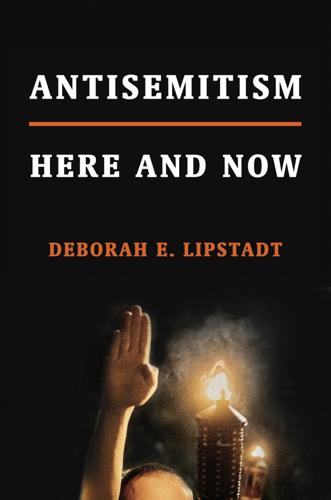
Antisemitism: Here and Now
by
Deborah E. Lipstadt
Published 29 Jan 2019
There are those who use traditional antisemitic stereotypes to demonize Israel, as Mark Yudof, president emeritus of the University of California writes: [T]heir rhetoric corrupts the language of human rights and expropriates the words historically used to demean the Jew, focusing instead on the Jewish state….For example, at the University of California at Berkeley, a professor who attended the BDS debate reported to me that Israeli soldiers were accused of deliberately killing women and poisoning wells. In an age of exquisite sensitivity on some campuses to microaggression, or language that subtly offends underrepresented groups, the ironic toleration of microaggression against Jews often goes unnoted.9 But it seems to me that this response doesn’t typify most of those engaged in this debate. There are supporters of pro-Palestinian causes who do not wish to see the destruction of Israel and who believe that their participation in movements such as BDS may genuinely lead to Israel changing those policies that adversely affect Palestinians.
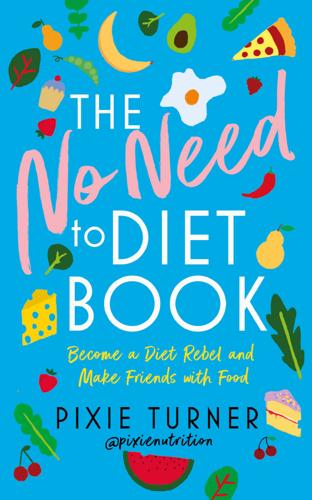
The No Need to Diet Book: Become a Diet Rebel and Make Friends With Food
by
Plantbased Pixie
Published 7 Mar 2019
I think almost all of us can put our hands up and say we’ve thought some of these thoughts when we see a fat person, particularly a fat person eating in public. When it comes to dieting and the weight-focused approach, the biggest and most unappreciated side effect is weight stigma. Weight stigma includes weight-related teasing, bullying, harassment, violence, hostility, ostracism, pressure to lose weight, and microaggressions such as being asked to purchase two plane tickets instead of one. Weight discrimination has increased over the years to a similar level to that of race and age discrimination.26 Weight bias is an example of social inequity, as people in larger bodies are treated differently from those in smaller bodies.
…
For example, for those with disabilities the effects of exercise are often overwhelmingly positive, likely due to the autonomy and personal control this gives. There may also be that sense of belonging to a group, which can help relieve loneliness and improve self-esteem. Exercise also seems to be incredibly beneficial for those in larger bodies, as often the stigma and microaggressions associated with this mean that self-esteem is very low to begin with, so there is more scope for subtle but significant improvement. Also, those who are sedentary are more likely to experience positive changes in self-esteem, as they are more likely to see changes in physical fitness, which can make it seem like the exercise is ‘working’, i.e. leading to body changes.
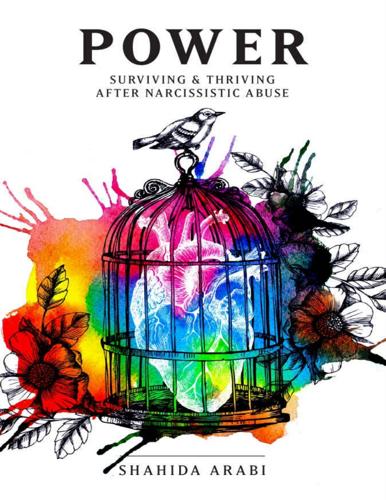
Power
by
Shahida Arabi
Published 11 Jan 2017
For example, rape accusations against well-liked figures are often met with the reminder that there are false reports of rape that occur. While those do occur, they are rare, and in this case, the actions of one become labeled the behavior of the majority while the specific report itself remains unaddressed (Kutner, 2015). These everyday microaggressions also happen in toxic relationships. If you bring up to a narcissistic abuser that their behavior is unacceptable for example, they will often make blanket generalizations about your hypersensitivity or make a generalization such as, “You are never satisfied,” or “You’re always too sensitive” rather than addressing the real issues at hand.
…
The lack of empathy and the excessive cruelty isn’t immediately apparent. It builds slowly and erupts quickly so that the victim doesn’t know what hit them. And it’s just as nauseating as being punched in the face or watching a bloody crime scene. That’s what it’s like to be with a narcissist. Imagine a thousand tiny microaggressions building a constant atmosphere of fear, doubt and pain. You probably don’t even have to imagine it because you’ve lived through it. There is always a web of doubt and uncertainty. A constant tension in the pit of your stomach, a heartbeat that races every other day, an inability to discern what will come next.
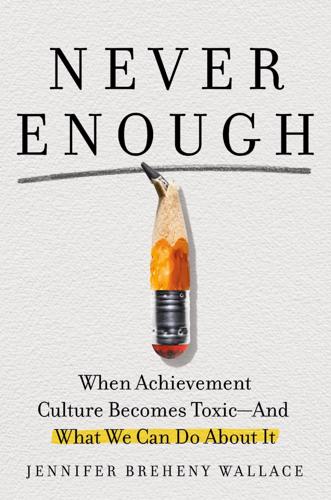
Never Enough: When Achievement Culture Becomes Toxic-And What We Can Do About It
by
Jennifer Breheny Wallace
Published 21 Aug 2023
Another Black student at a private school in New York City described the exhaustion that came with feeling like she didn’t quite belong. Sometimes, she was called by the name of another Black student in her grade: “I used to correct people, but now I don’t even bother.” These experiences cut feelings of mattering at the core. Microaggressions and discrimination send a powerful message that some people in the community are more valued than others, said Blessing Uchendu, a consultant with high-performing schools and a private-practice therapist in New York City. “The more you identify yourself as living in the margins of these generally white, affluent schools, and the further away you are from the idealized norms in these communities, the more you can be made to feel like you don’t measure up, that you’re not enough,” said Uchendu.
…
Elliott, Family Matters: The Importance of Mattering to Family in Adolescence (Chichester, UK: Wiley-Blackwell, 2009), 58. GO TO NOTE REFERENCE IN TEXT “envy brings the pain”: Robert E. Coles, “The Hidden Power of Envy,” Harper’s Magazine, Aug. 1995, https://harpers.org/archive/1995/08/the-hidden-power-of-envy. GO TO NOTE REFERENCE IN TEXT Microaggressions and discrimination: Isaac Prilleltensky and Ora Prilleltensky, How People Matter: Why it Affects Health, Happiness, Love, Work, and Society (Cambridge: Cambridge University Press, 2021), 224–26. GO TO NOTE REFERENCE IN TEXT how Black boys experience: Roderick L. Carey, Camila Polanco, and Horatio Blackman, “Black Adolescent Boys’ Perceived School Mattering: From Marginalization and Selective Love to Radically Affirming Relationships,” Journal of Research on Adolescence 32, no. 1 (Dec. 2021): 151–69, https://doi.org/10.1111/jora.12706.
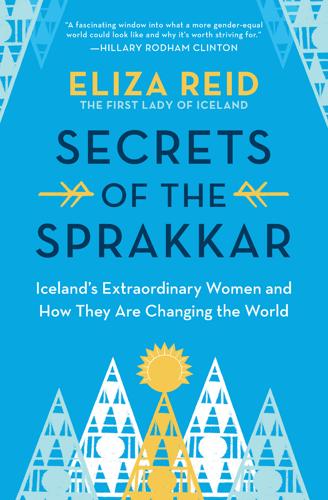
Secrets of the Sprakkar
by
Eliza Reid
Published 15 Jul 2021
“For more than twenty years, they are working and working, have kids, keep a tidy home, are thin and cute, go to yoga, found a company. Then all of a sudden, they’re sitting in the car outside their home one day, and they can’t breathe.” It shouldn’t be like that. Turning that oil tanker around takes more than a blueprint, more than relentless calling out of microaggressions in photo captions and reporting more blatant threats that appear in social media. It involves rewarding women for taking up their space, for using their voices, not dismissing them as attention seekers and questioning their experience and wisdom. We all need to treat subject fields in which there tend to be more women—from fashion to education—as equally important.
…
Many services are now available in English and Polish, the latter being the language of by far the largest immigrant group in the country.* Many schools send notices to parents in multiple languages. There is a mosque in Reykjavík and a resident rabbi who leads services on Jewish holy days. Yet we all still make snap, unconscious judgments about those with “foreign” names, and people of color are subject to racial microaggressions on a daily basis. My identities as a woman and as an immigrant are inextricable. My experience has been largely positive. Most people in this country would be pleased about that, it seems. A 2020 Gallup survey ranked Icelanders’ tolerances to immigrants at 8.41 (out of a maximum of 9), second only to my home country, Canada, in the global rankings.44 But there is no cookie-cutter immigrant experience.

Everything's Trash, but It's Okay
by
Phoebe Robinson
Published 15 Oct 2018
All kidding aside, just like the New Year’s resolution makers and my fellow fickle exercisers, I got hyped as hell about the Obama presidency and rode the wave of happiness right into the 2016 election, believing that since we knocked down one barrier, our work was done, and like dominos, other barriers were going to come crashing down. I think a lot of feminists as well as the feminist movement itself felt that way. After we make some progress (like director Ava DuVernay becoming the first woman of color in charge of a $100 million movie budget), we sometimes get excited as if the everyday microaggressions women face are now a thing of the past. And even if there is more structural change going on (i.e., the passing of Title IX in 1972, which is a law that states no person can be discriminated against on the basis of their sex at an educational program getting federal financial assistance), we still have a long way to go because it’s clear that in plenty of instances, the #YesAllWomen doesn’t apply to all women, even as we’re in the age of #MeToo and #TimesUp, which are currently dragging the patriarchy out the door as it’s kicking and screaming to stay in the past.
…
Forty acres and a mule is at one end, and the other includes, but is not limited to, the following: winning the lottery, white people apologizing when they’re wrong, being able to apply for a job that perhaps fifty years ago you wouldn’t have been allowed to, Fenty Beauty existing, and when a white artist performs at the Grammys and isn’t backed by a black choir. #BlackPeopleAreMoreThanTheSrirachaYouUseToLivenUpYourDustyAssMusic. What I’m getting at is that all those things I listed above and more help brighten black lives, which are often riddled with macro- and microaggressions. And as I take stock of the thirty-four years I’ve been on this planet, I’ve probably had more than my fair share of reparations. Not that I’m complaining, because the world right now is practically a season two episode of Hoarders, so it seems like perfect timing to pause and relive the moments Bono came into my life.
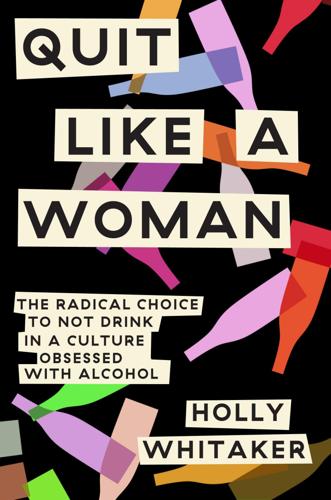
Quit Like a Woman: The Radical Choice to Not Drink in a Culture Obsessed With Alcohol
by
Holly Glenn Whitaker
Published 9 Jan 2020
But before we discuss how to implement solutions to the Two-Part Problem, we need to address one of the bigger issues that women and other historically oppressed folks need to consider, which is how patriarchal structures affect the root causes of addiction, how they dominate the recovery landscape, and what that means for how we experience recovery. If we are sick from sexism, homophobia, racism, classism, microaggressions, misogyny, ableism, American capitalism, and so on—and we are—then we need to understand how recovery frameworks that were never built with us in mind can actually work against us, further pathologizing characteristics, attributes, and behaviors that have been used to keep us out of our power for millennia.
…
If you are a white, hetero, cis woman, perhaps you understand that if you try to heal in a space that denies your lived experience—a space in which it is unsafe to speak of the things that have held you down and out of power, or the rape you endured, or the way your husband beats you—you will not heal. And if you are a woman of color or any other oppressed identity, and you try to heal in a space that denies your lived experience—of the microaggressions you metabolize daily, of the murder of your people by racist cops who operate above the law, of the disenfranchisement you face for the color of your skin or your sexual orientation, of the constant threat of harassment and bullying and murder because you’re trans, or nonbinary, or queer—you will not heal.

Dangerous Ideas: A Brief History of Censorship in the West, From the Ancients to Fake News
by
Eric Berkowitz
Published 3 May 2021
The country’s highest court recognized the value of press freedom, but not when the press “instructs” on matters of even petty crime.12 In the book accompanying a 1984 New York Public Library exhibition about censorship, the historian Arthur Schlesinger concluded that it “has lost its moral advantage, at least in democratic nations,” which he posited against “those vast regions of the world sadly sunk” in “fanaticism.”13 What a difference a few decades make. European and other nations now aggressively punish expressions of racism and intolerance; Google censors its search results, and the BBC buries news to gain entry into foreign markets; and students demand that microaggressions be suppressed. The certainties of Schlesinger’s universe concerning censorship have been erased. Who would have thought that we would be nostalgic for 1984? POLITICAL SPEECH UNDER PRESSURE “A totalitarian state is in effect a theocracy,” wrote George Orwell, “and its ruling caste, in order to keep its position, has to be thought of as infallible.”
…
“I FIND THAT OFFENSIVE”: HATE, INCITEMENT, AND THE LIMITS OF TOLERANCE Which has more value: one’s freedom to voice vile opinions, or the peace of mind of those spoken about? Is one person’s or group’s taking offense enough to shut down speech that is addressed to everyone? Put still another way, if tolerance is a foundation for a free society, what should result when tolerance reaches its limit? These questions underlie every complaint against microaggressions, every removal of abusive remarks online, and every prosecution for hate speech. Is freedom possible when some may rob others of their dignity, or is degrading speech one of the bitter medicines a free society must swallow? There is no consensus in the West. The US subordinates dignity to liberty of speech.

Whiteshift: Populism, Immigration and the Future of White Majorities
by
Eric Kaufmann
Published 24 Oct 2018
The vanguard of the politically correct movement on college campuses dates from the late 1980s, but has been amplified by social media and online forums since the early 2010s. Google searches for ‘racist’ and ‘sexist’ begin rising in late 2009, while searches for ‘white privilege’, ‘whitesplaining’, ‘homophobic’, ‘transphobic’ and ‘microaggression’ begin to rise in 2012–13 and take off during 2014–15, prior to Trump’s arrival on the scene. Bradley Campbell and Jason Manning document the efflorescence of the new progressive crusade against microaggressions in their 2014 paper and subsequent book.9 Meanwhile, Zach Goldberg’s work shows that consumption of social media and online websites soared, and appeared to be exerting a radicalizing effect on liberal whites’ opinions on race, sex and gender.
…
Pamela Wood, ‘Christopher Columbus monument vandalized in Baltimore’, Baltimore Sun, 21 August 2017. 7. Pat Buchanan, ‘Trump embraces the culture war’, Patrick J. Buchanan Official Website, 10 October 2017. 8. ‘Polls [sic] shows majority of Americans’. 9. B. Campbell and J. Manning, The Rise of Victimhood Culture: Microaggressions, Safe Spaces, and the New Culture Wars, Cham, Switz., 2018: Palgrave Macmillan. 10. Zach Goldberg, Twitter posts @ZachG932, 31 May–28 June 2018. 11. A. Nagle, Kill All Normies: Online Culture Wars from 4chan and Tumblr to Trump and the Alt-Right, Winchester and Washington, DC, 2017: Zero Books. 12.

Confronting Capitalism: How the World Works and How to Change It
by
Vivek Chibber
Published 30 Aug 2022
In recent years, many on the Left have become critical of “identity politics” as a political movement that distracts from deeper issues of class power. Now, it is of course true that what passes for struggles around race, caste, or gender oppression has become focused on very narrow and often symbolic issues. Identity politics, especially on college campuses, often revolves around “microaggressions,” symbolic affronts, individual choices, etc. But the fact that a centrally important issue is being reduced to these matters of taste and symbolism doesn’t mean that that is all there is to the issue. Outside the university, in workplaces and labor organizations, domination on the basis of social identity—real domination, not just the language of it—is not only pervasive, but utterly crippling.
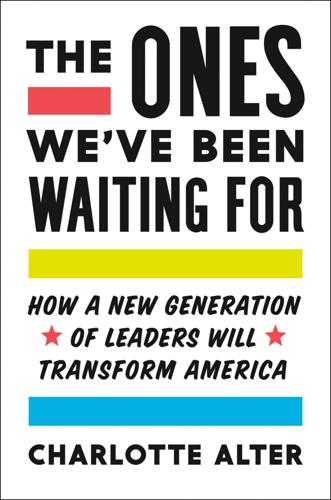
The Ones We've Been Waiting For: How a New Generation of Leaders Will Transform America
by
Charlotte Alter
Published 18 Feb 2020
But when taken collectively, the qualities that seem grating on an individual level actually hint at a broader political disposition. Individually, millennials are stereotyped as entitled; collectively, they demand broad government investment in a twenty-first-century social safety net. Individually, they’re caricatured as oversensitive to “microaggressions”; collectively, they’re pushing toward a more comprehensive vision of social justice. Individually, they seem glued to their phones; collectively, their intuitive use of social networks has given them a fresh understanding of how individuals work within systems. Individually, they come off as naive or demanding; collectively, that looks a lot like idealism.
…
His position as the affable warrior against the sanctimonious left tapped into one of the only areas in which Republicans seemed to be gaining ground with young people. The “outrage culture” on the left was very real, especially on college campuses, and Independent and conservative-leaning young people were constantly finding themselves accused of “hate speech” and “microaggressions” by their left-leaning classmates. In the Trump era, the thrill of rejecting the overzealous “social justice warriors” (also known as “owning the libs”) seemed to be one of the only things driving young people toward the Republican Party. Wide majorities of Americans said they thought the country was getting too “politically correct,” and in one Harvard poll, nearly half of young voters said they thought political correctness was at least partly responsible for America’s problems.
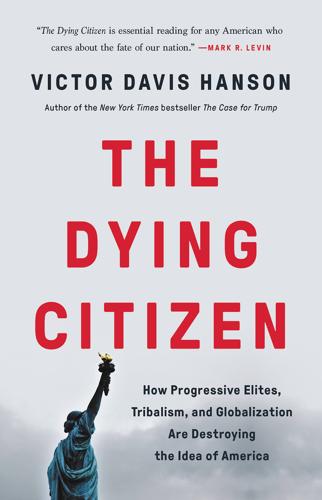
The Dying Citizen: How Progressive Elites, Tribalism, and Globalization Are Destroying the Idea of America
by
Victor Davis Hanson
Published 15 Nov 2021
Their duties in the workplace and on campuses are to monitor the precise racial makeup of the labor force, to adjudicate the authenticity of individual racial pedigrees, to “reeducate” the majority of the white population about its toxic insidious privilege, to ensure that curricula and communications include proper vocabulary and phraseology, and, of course, constantly to ferret out a racial microaggression or transgression that might end a career or livelihood.29 Nor do we say publicly that some nonwhite groups seem more comfortable with whites than with other nonwhite groups, belying the notion of a monolithic them-versus-us America defined as a binary of the privileged white population and the nonwhite underprivileged.
…
There are certainly vestigial white supremacists. But the charge that such racist ideology, known as “systemic racism,” permeates all of American society is rarely demonstrated. Still, the charge is put to good use by the industry of diversity that must find ever-subtler ways of tracking down biases by employing terms like “microaggressions” and “implicit bias” that reveal by their very qualifiers a poverty of such overt pathologies. Few yet have offered a systematic definition of systemic racism, especially in terms of how it differs from practice in other nations and societies. Could such a putative exegesis explain how it operates, say, in the NBA, by either denying full opportunities to multimillionaire and disproportionately overrepresented African Americans or, contrarily, “rigging” an industry that “systemically” excludes Asian and Latino Americans?
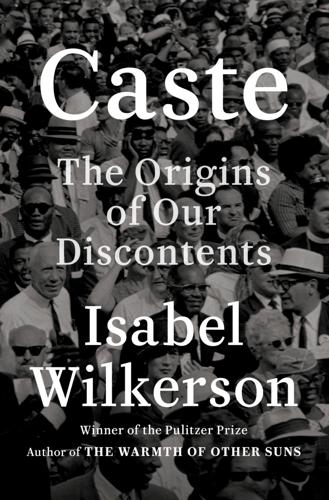
Caste: The Origins of Our Discontents
by
Isabel Wilkerson
Published 14 Sep 2020
The woman had crossed so many boundaries it was hard to process. Something had made her feel entitled enough to enter into the private space of people she did not know and veto a father’s decision regarding his own son. This was Oakland, bright blue home of Huey and Tupac, where such phrases as gender nonconformity and micro-aggressions are part of everyday language. The woman would not have gotten up if she didn’t perceive she had a right to. Had she done this to other parents? Would she have breezed past a white father, ignored him to tell his son to do precisely what the father had just told him not to? The father held up his hand like a traffic officer signaling a car to stop.
…
“We have to forgive time and time again while racism or white silence in the face of racism continues to thrive. We have had to forgive slavery, segregation, Jim Crow laws, lynching, inequity in every realm, mass incarceration, voter disenfranchisement, inadequate representation in popular culture, microaggressions and more. We forgive and forgive and forgive and those who trespass against us continue to trespass against us.” In 2018, as every week seemed to bring a new case of dominant-caste people calling the police on black people going about their daily lives, a middle-aged white woman in Brooklyn called the police on a nine-year-old boy who she said had sexually assaulted her as he passed her at the register at a corner deli.
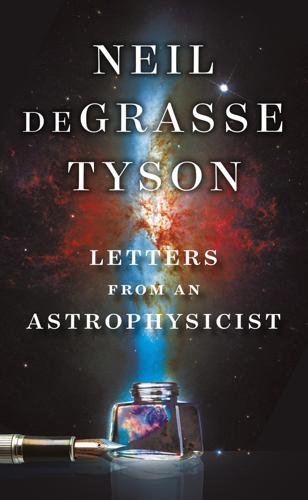
Letters From an Astrophysicist
by
Neil Degrasse Tyson
Published 7 Oct 2019
As Johnny came around the last turn in the quarter mile, he was ahead of the New York Athletic Club runner by several strides when he overheard the fellow’s coach audibly yell to his runner, “Catch that nigger!” Johnny’s reply to himself was simple and direct, “This is one nigger he ain’t gonna catch!” and lengthened his lead to the finish line. What today might be called micro-aggressions, back then were parlayed into forces of inspiration to excel. From that example, I’ve used such occasions in my life to excel beyond even the expectations I hold for myself. You told of immigrant Grandma’s work as a seamstress. Grandpa’s work as night watchman for the food service company Horn & Hardart.
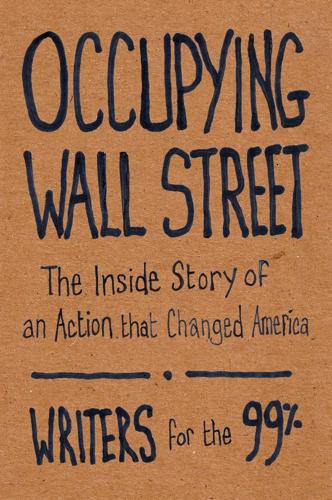
Occupying Wall Street: The Inside Story of an Action That Changed America
by
Writers For The 99%
Published 17 Dec 2011
Meanwhile, groups like Occupy the Hood, which had similar goals, emerged and began to work with the POC—a boon for the movement because increasing POC presence has made marginalized groups feel more comfortable becoming involved with OWS and attending GAs across the city. Yet, despite this, some of the concerns raised early in the movement around issues of race continue to be a deterrent for people of color who have not participated directly within OWS and even people of color within OWS have continued to experience incidences of explicit racism and racial micro-aggressions. On Columbus Day (referred to as Indigenous Peoples’ Day by POC), Mexica, an indigenous, cultural Mexican performance group began to dance in the space under the Red Thing. Moving to the beat of the drums, dancers dressed in white and red, becoming the beat themselves, as the beaded bracelets on their ankles entranced a crowd of about 100 people.
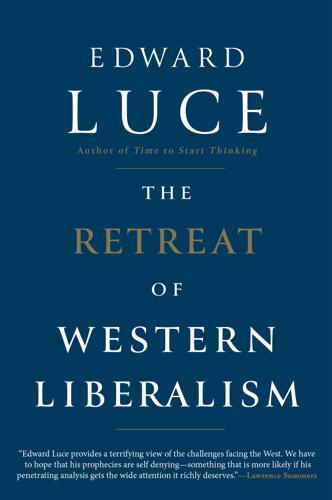
The Retreat of Western Liberalism
by
Edward Luce
Published 20 Apr 2017
The subtext of Mrs Clinton’s campaign was that she was the harbinger of a new America in which whites were rapidly turning into a minority. Adapting to this new multicultural world would require an ongoing revision of our vocabulary – an expanding lexicon of political correctness. The campus movement to create ‘safe spaces’ protected from ‘microaggressions’ and issue literary ‘trigger warnings’ found its ultimate echo in the Clinton campaign. Yet the demography-as-destiny vision rests on highly dubious assumptions. The US census projects that America will become a minority-majority country by 2044, when whites drop to below half the population.23 But that is only because Washington classifies Hispanics as non-whites, a revision that was made at the turn of the millennium.
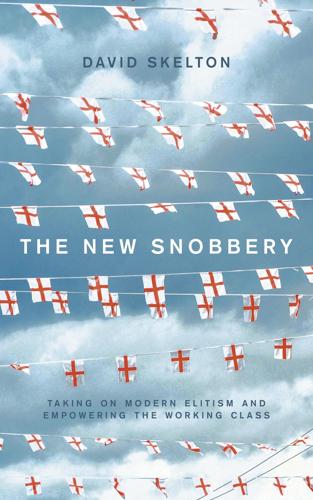
The New Snobbery
by
David Skelton
Published 28 Jun 2021
People from an ethnic-minority background, for example, are much more likely to be stuck in low-paid work. Tackling the economic insecurity faced by low-paid workers and taking steps to strengthen community and family life will do more to change lives than a million well-meaning social media posts and endless discussions about statues, street names or microaggressions. A media circus about avant-garde theories or the politics of Churchill might help to boost the media presence of previously obscure academics, but it won’t improve the quality of life for black Britons; it will distract energy from tackling deep-seated issues in criminal justice, the economy and healthcare.
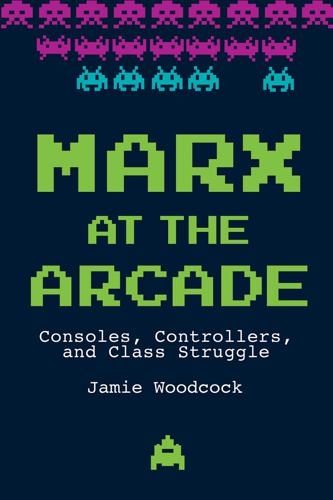
Marx at the Arcade: Consoles, Controllers, and Class Struggle
by
Jamie Woodcock
Published 17 Jun 2019
A majority (56 percent) had “perceived inequity towards” themselves “on the basis of gender, age, ethnicity, ability, or sexual persuasion,” and a minority (44 percent) had perceived inequity toward others. This included inequity in relation to issues of recruitment, hiring, promotion, salary and other forms of compensation, disciplinary action, interpersonal relations, microaggressions, workload, and working conditions. Only around half of workers were employed in companies that had a policy advancing equity or diversity, such as a “general non-discrimination policy” (57 percent), an “equal opportunity hiring policy” (49 percent), or a “sexual harassment policy” (48 percent).
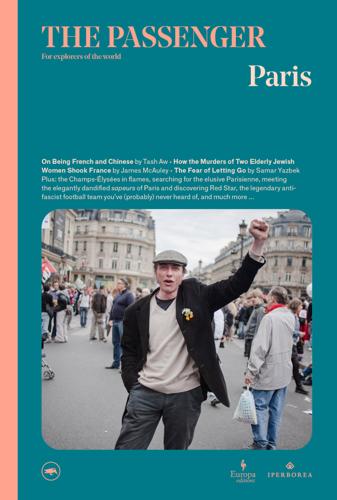
The Passenger: Paris
by
AA.VV.
Published 26 Jun 2021
“No matter how you feel inside,” my father told me, “when the world looks at you, they see a Chinese person.” It was around that time, too, that I began to realise that all the things I’d accepted as normal – people mocking Chinese accents to my face, even though I speak just like any other French person, casual comments sexualising Asian women and desexualising Asian men – were micro-aggressions, and that I had to embrace my culture instead of rejecting it. ‘My parents ran a bar-tabac towards the Oberkampf side of the 11th arrondissement. I wanted to do what bourgeois white-French kids do, so I applied to Sciences Po, one of the most prestigious of the country’s grandes écoles. Few people in my community thought it was worth it – they couldn’t imagine it possible for me to pursue a career in human or social sciences, and definitely not in politics.
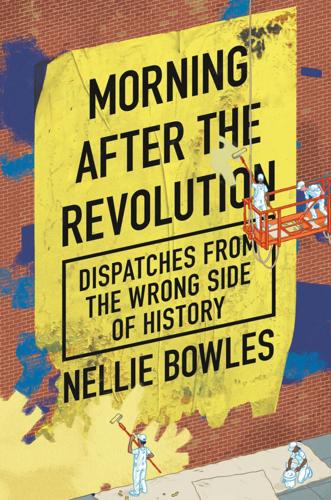
Morning After the Revolution: Dispatches From the Wrong Side of History
by
Nellie Bowles
Published 13 May 2024
Part II ATONEMENT Speaking Order I once had an on-camera job at a trendy media company in Brooklyn. And anytime I had an idea in a meeting, a slightly younger man would repeat what I’d said and people would remember the idea as his. A mediocre idea of mine suddenly became gold when a young man spoke it. It was an odd thing, a microaggression if you will, and it drove me wild. I complained, as I love to do, but nothing was changing. So I came up with a dark solution: Before a meeting, I’d give my ideas to my handsome male producer, and he would pitch them. It worked beautifully. It drove me crazy. But it worked, and there I was getting on camera.

The Aristocracy of Talent: How Meritocracy Made the Modern World
by
Adrian Wooldridge
Published 2 Jun 2021
The first is that Martin Luther King’s idea of a colour-blind society is a nonsense. People who claim not to ‘see colour’ are acting within a context of a society that is profoundly shaped by racial advantage and disadvantage. They are also influenced by all sorts of hidden prejudices that express themselves in ‘microaggressions’. By not seeing colour you are not seeing the world as it is. The second is that ‘meritocracy’ is nothing more than an illusion designed to justify and perpetuate white power. This is not just because white people have better opportunities than black people because they have benefited from the legacy of slavery and exploitation, but also because supposedly objective standards are distorted by power.
…
Even before the Black Lives Matter movement took off, many of these ideas had embedded themselves in academia – particularly in humanities departments and in the expanding cadre of administrators. The University of California, Los Angeles, has declared, in its official guidelines, that it is a ‘racial micro-aggression’ to say things like ‘when I look at you I don’t see colour’; ‘there is only one race: the human race’; and ‘I don’t believe in race.’ The University of Wisconsin-Stevens Point has advised staff that any comment that suggests ‘you do not want to acknowledge race’ is a problem. The University of Missouri’s guide to ‘inclusive terminology’ has declared that the idea of colour blindness can be ‘disempowering for people whose racial identity is an important part of who they are’.

Generations: The Real Differences Between Gen Z, Millennials, Gen X, Boomers, and Silents—and What They Mean for America's Future
by
Jean M. Twenge
Published 25 Apr 2023
In November 2021, when the news was dominated by the trial of Kyle Rittenhouse in Wisconsin and the killers of Ahmaud Arbery in Georgia, she sent a campus-wide email noting that “these types of highly visible trials can… lead to certain members of our community experiencing much higher levels of stress. This is especially true for those who experience unfounded biases and microaggressions in their day to day lives.… These recent years have been challenging and, at some times, devastating. We have experienced tremendous loss throughout the pandemic period, and that loss has disproportionately hit many communities of color. Also, much of the national discourse surrounding the trials this week has only highlighted the systemic racism that continues to threaten the fabric of our society.”
…
York, Equality of Educational Opportunity, report from the Office of Education, US Department of Health, Education, and Welfare, National Center for Educational Statistics (Washington, DC: US Government Printing Office, 1966). sociologists Bradley Campbell and Jason Manning write: Bradley Keith Campbell and Jason Manning, The Rise of Victimhood Culture: Microaggressions, Safe Spaces, and the New Culture Wars (New York: Palgrave Macmillan, 2018). “The pleasures of aggression were henceforth added to the comforts of feeling aggrieved”: Roger Kimball, “The Rise of the College Crybullies,” Wall Street Journal, November 13, 2015. Brad Ledford and Madison Cawthorn were driving home: Sean Neumann, “Madison Cawthorn Wasn’t Left ‘to Die’ in Fiery Crash, Says Friend Who Was Driving,” People, March 3, 2021.

The Right Side of History
by
Ben Shapiro
Published 11 Feb 2019
Social psychologist Jonathan Haidt of New York University points out that the most effective type of therapy for distorted thinking is cognitive behavioral therapy, in which people are taught to break chains of thought by using reason and evaluation—precisely the opposite of what our modern universities have been doing. “The recent collegiate trend of uncovering allegedly racist, sexist, classist, or otherwise discriminatory microaggressions doesn’t incidentally teach students to focus on small or accidental slights,” he writes. “Its purpose is to get students to focus on them and then relabel the people who have made such remarks as aggressors.” This, Haidt concludes, makes society more censorious, and makes students more psychologically unstable: “The new protectiveness may be teaching students to think pathologically.”41 Even worse, people who perceive themselves as victims are also more likely to become aggressors; as social psychologist Roy Baumeister explains, “Many violent people believe that their actions were justified by the offensive acts of the person who became their victim.”42 Which is precisely what we’ve seen from campus rioters and social media malcontents and the movement to use government force to shut down particular types of disapproved speech.
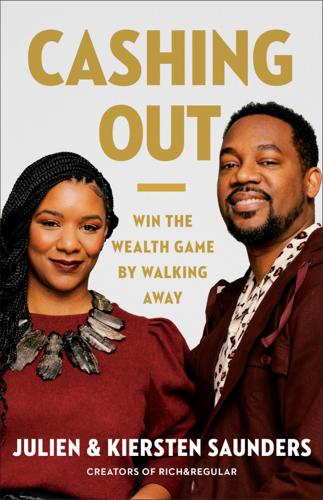
Cashing Out: Win the Wealth Game by Walking Away
by
Julien Saunders
and
Kiersten Saunders
Published 13 Jun 2022
Or having to choose between responding to a child’s developmental needs, nurturing a broken marriage, and our own self-care to keep the family afloat. And on top of it all, we earn less than our white peers for doing the same work, we’re less likely to be promoted, and we have to deal with a constant slew of microaggressions in predominantly white workplaces. This is why so much of the standard financial and career advice falls on deaf ears. It doesn’t acknowledge the other factors that play a huge role in how so many of us earn money. In this book, we promise not to hide from those touchy subjects; rather, we’ll face them head-on and incorporate them into our advice.

The Geek Feminist Revolution
by
Kameron Hurley
Published 1 Jan 2016
It’s gotten to the point where I’ll actually ask before I choose a film if it’s got any sexual assault or threats of same before I decide to watch it. When I’m annoyed, stressed, and exhausted, I don’t want to spend what should be entertaining downtime gritting my teeth through uncomfortable microaggressions aimed at women. I get enough of that all day in real life. I want some fucking escapism. And if there are films that can give me that, I’m going to prefer those over the ones that don’t. Many say that it’s the shifting demographics of the United States that will force many media companies to make changes—by 2050, 50 percent of the United States will be made up of people of color.
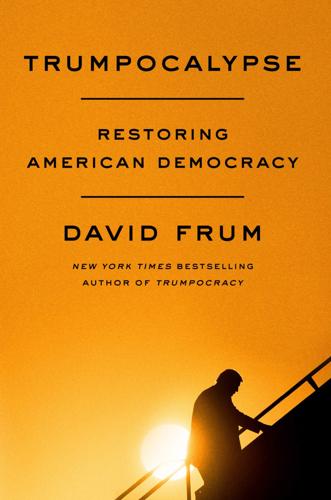
Trumpocalypse: Restoring American Democracy
by
David Frum
Published 25 May 2020
Then, when you express your disgust with the scientists as a bunch of impractical idiots working for globalist billionaires . . . your own children look at you as if you were the idiot. It’s galling. The Trumpist Right habitually applies the jibe snowflake to disparage the supposedly overtender feelings of modern youth. Yet no group of Americans complains more about microaggressions than the Trump base and Fox News audiences. No issue wounds their ego more than climate. They believe they should be on top, they should write the rules. Instead, they are told that they are ignorant, they are wrong, they are killing the planet. It’s insulting, it’s intolerable. That’s why they love Trump.

Home Grown: How Domestic Violence Turns Men Into Terrorists
by
Joan Smith
Published 5 Apr 2019
Documents released in 2018 included witness statements from a couple of people who claimed they had heard him repeat right-wing conspiracy theories, but the Las Vegas police said they were no closer to establishing his motive. At the same time, a disturbing picture of his character and, in particular, his behaviour towards women quickly began to emerge. His younger brother, Eric Paddock, described him as ‘the king of micro-aggression’, claiming that he would light a cigar and blow smoke into the faces of people who annoyed him, even though he didn’t actually smoke.183 He was arrogant and controlling, according to staff in a Starbucks in Mesquite who recognised Paddock as a regular customer and claimed that he often verbally abused Ms Danley in front of them.
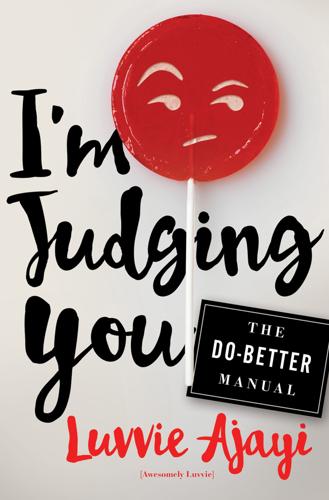
I'm Judging You: The Do-Better Manual
by
Luvvie Ajayi
Published 12 Sep 2016
It is usually a white person who is earnest and honest in their admiration of your verbal abilities, and in that moment, you swing between being appreciative and being totally offended. It’s a backhanded compliment at best, but mostly it’s a put-down, because no matter how much you’ve studied, how nice your clothes are, or how impressive your body of work is, people will still expect little from you (because: minority). It’s microaggressions and instances of casual racism like this that pepper our daily lives, leaving a terrible taste in our collective mouths, and it usually comes from white folks who consider themselves to be liberal, learned, and progressive. Sometimes, I wonder which is better: a blatant bigot or an oblivious racist?
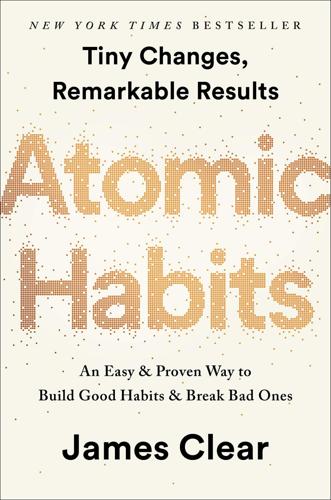
Atomic Habits: An Easy & Proven Way to Build Good Habits & Break Bad Ones
by
James Clear
Published 15 Oct 2018
The same is true for how you think about others. Once you fall into the habit of seeing people as angry, unjust, or selfish, you see those kind of people everywhere. Outrage compounds. Riots, protests, and mass movements are rarely the result of a single event. Instead, a long series of microaggressions and daily aggravations slowly multiply until one event tips the scales and outrage spreads like wildfire. WHAT PROGRESS IS REALLY LIKE Imagine that you have an ice cube sitting on the table in front of you. The room is cold and you can see your breath. It is currently twenty-five degrees.

I Hate the Internet: A Novel
by
Jarett Kobek
Published 3 Nov 2016
They understood the function of a head writer and executive producer. Yet whenever an episode of Doctor Who aired, these very same people would tweet as if the fictional events depicted were really happening. The tweets would contain outrage about the Doctor’s choices and the implications of those choices, and all the privilege and microaggressions revealed in those choices. It was impossible to tell whether or not the users of Twitter understood that Doctor Who was fictional. It was impossible to tell whether or not the users of Twitter understood that the Doctor wasn’t real. This inability to distinguish fiction from reality was also present in the world of comics.
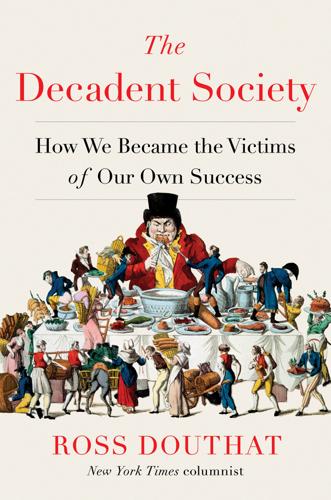
The Decadent Society: How We Became the Victims of Our Own Success
by
Ross Douthat
Published 25 Feb 2020
At the same time, as Musa al-Gharbi noted in a 2019 essay for the website Heterodox Academy, both the demands of “awokened” activists and the counterthrusts of the new progressivism’s critics are very familiar from earlier rounds of campus debate. And many of the ideological frameworks and buzzwords—the special emphasis on victimhood and trauma, concepts of language-as-violence, the rhetoric of “safe spaces” and “microaggressions,” and more—date to the Vietnam and post–civil rights era, the late 1960s and 1970s, the coming-of-age of the baby boom. And, of course, all of these battles are happening on the same elite campuses, the same Very Important Schools as held sway over American higher education and high culture sixty years ago.
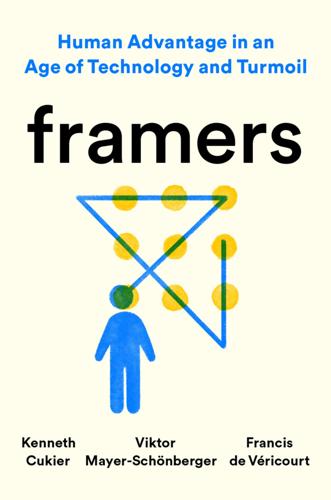
Framers: Human Advantage in an Age of Technology and Turmoil
by
Kenneth Cukier
,
Viktor Mayer-Schönberger
and
Francis de Véricourt
Published 10 May 2021
As an intelligent, sharp-tongued celebrity-journalist in her thirties who relishes challenging liberal dogma, Weiss fell into the crosshairs. She criticized the Women’s March following Trump’s inauguration. She expressed alarm that #MeToo might go too far. She profiled the “intellectual dark web” of non-mainstream thinkers and denounced the censorship, microaggressions, and safe spaces that typify the culture wars. Her work generated animosity on both sides of the aisle. Jewish, she was labeled a Nazi by trolls. In June 2020, after the op-ed section published a piece calling on Trump to use the military to quell incidents of looting and rioting that were happening alongside some of the Black Lives Matter protests, a staff insurrection forced out Bennet, the op-ed editor who had recruited Weiss.
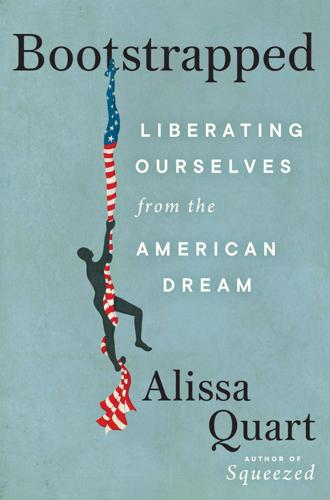
Bootstrapped: Liberating Ourselves From the American Dream
by
Alissa Quart
Published 14 Mar 2023
According to Rhonda Magee, a law professor at the University of San Francisco, that term entails not just being more aware of our sensations and breath but also the idea that the obstacles to such ease and awareness might be political in nature. Toward this end, Magee directs those seeking enlightenment and relief to reflect on “microaggressions—to hold them with some objectivity and distance” and consider them with a degree of detachment, all without denying the pain they may cause and internalizing it. In YouTube videos, Magee suggested that we openly discuss this topic. It was David Forbes who led me to Magee. Forbes described himself, in a high-pitched Bernie Sanders–like Brooklyn accent, as a “professor of contemplative education,” but his more worldly title is associate professor in the school counseling program at Brooklyn College’s School of Education.
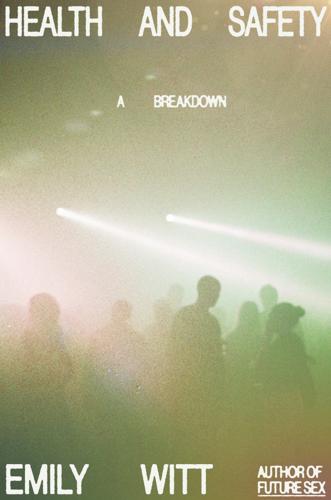
Health and Safety: A Breakdown
by
Emily Witt
Published 16 Sep 2024
I love having so much food .” It quickly became cliché to point out the difference between the way the political establishment and the media paraded the pain of these wealthy suburban children versus their treatment of the young founders of Black Lives Matter a few years earlier. This was the era of quibbling about microaggressions, yet the racism was so obvious. The grief and rage of the white suburban children was treated as sacred and moving. Surviving a school shooting gave them moral supremacy, the right to speak against a society that had failed them, the right to ask for special protection and care in the aftermath of the event, and the adults would perform gestures of care while failing to fix what everyone agreed was a uniquely American problem.

Amateurs!: How We Built Internet Culture and Why It Matters
by
Joanna Walsh
Published 22 Sep 2025
Another was her co-authorship of a paper on dataset bias in AI, covering everything from its physical impact – the environmental racism of AI’s carbon footprint that hits global-majority countries harder – to the creation of a ‘hegemonic world view from the training data’, to the recycling of abusive language, hate speech, microaggressions, stereotypes and dehumanising language aimed at specific identities. In a feat of linguistic re-assignation, demonstrating exactly what Gebru criticised, Google still claims Gebru ‘resigned’. Gebru’s claims hold up. StereoSet, created in 2020 by researchers from MIT, Intel and CIFAR to analyse the nature and occurrence of AI bias, found that pre-trained language models – including Google’s BERT and XLNet, OpenAI’s GPT2 and Facebook’s RoBERTa – reproduced stereotypes of ethnicity, race and gender.25 Perhaps surprisingly, they found that using 123larger models does not improve CAT (context association test) scores, but that ‘as the language model becomes stronger, so its stereotypical bias [does] too’.26 These models are never entirely self-trained.

How to Fail: Everything I’ve Ever Learned From Things Going Wrong
by
Elizabeth Day
Published 3 Apr 2019
I’m acutely aware, as I write this book, that I am in no way an expert and cannot offer the reader anything other than my own lived experience. I am a privileged, white, middle-class woman in a world pockmarked by racism, inequality and poverty. I do not know what it is like to experience daily micro-aggressions or to be spat at in the street or passed over for a job promotion because of the colour of my skin. I have no idea what it is like to exist on the minimum wage, to be a refugee, to be disabled, to have serious health issues or to live in a dictatorship where freedom of speech is not allowed.
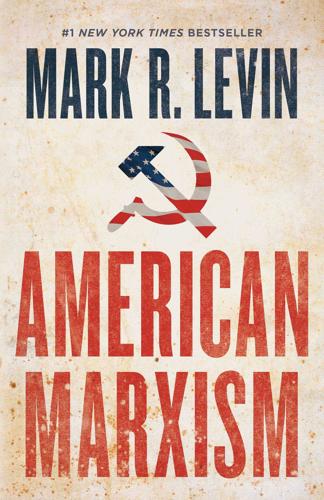
American Marxism
by
Mark R. Levin
Published 12 Jul 2021
If one points out, for instance, that accounts of white supremacy as an all-powerful force in American society tend to discount that some nonwhite groups like Nigerian Americans, Indian Americans, and East Asian Americans all have more income equity than the average white person, this itself is invalidated as a racist microaggression. The media has actively promoted a theory of racism that misrepresents facts about the world while stigmatizing any effort to criticize those facts as racist.”44 Consequently, the media have joined the critical race activists, once dismissed as advocates for a radical and fringe movement, and the horrendous racism and demonization they represent and espouse, in enthusiastically advocating for their Marxist-centric transmutation of American society.
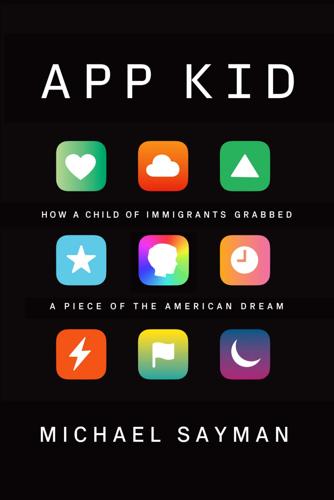
App Kid: How a Child of Immigrants Grabbed a Piece of the American Dream
by
Michael Sayman
Published 20 Sep 2021
Finally, an African-American woman in the room raised her hand. “Was it because of your hair?” “Exactly!” laughed Maxine. “You’re the only one who gets it!” She explained to the rest of us that saltwater presented challenges to her Black hair. I came from a home where terms like “institutional racism,” “microaggression,” and “safe space” weren’t spoken in any language; where someone’s Peruvian mom might say stuff like, “Don’t worry, Mariana, you can always marry a rich guy!”; and where kids still used “gay” as a put-down, so diversity training was an eye-opener. While I knew that Maxine was more insightful than your average person at Facebook, or probably anywhere, I was surprised she was willing to take so much time with a low-level noob like me.

Why We're Polarized
by
Ezra Klein
Published 28 Jan 2020
And as long as much of the country feels threatened by the changes they see, there will be a continuing, and perhaps growing, market for politicians like Trump. I. It’s worth noting that these dynamics cut in the other direction, too: a 2016 study by Alexander Kuo, Neil Malhotra, and Cecilia Hyunjung Mo split a sample of Asian American college students into two groups. One group was subjected to a staged microaggression during the study—their US citizenship was doubted by the researcher managing the experiment. The incident sparked a sharp shift toward support of the Democratic Party. II. There’s an interesting debate about whether Trump became a culture warrior out of calculation or authentic fury. After Romney lost in 2012, Trump criticized him for telling undocumented immigrants to “self-deport” and argued for a gentler GOP.
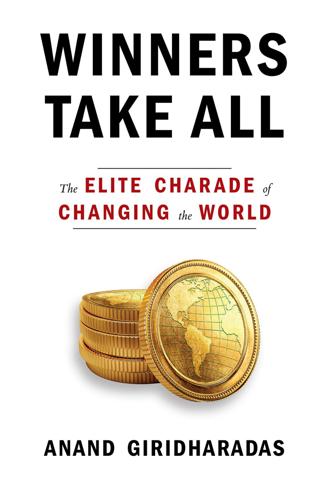
Winners Take All: The Elite Charade of Changing the World
by
Anand Giridharadas
Published 27 Aug 2018
After all, her academic colleagues in other fields like race, gender, and sexuality—to cite just a few examples—worked, in a slow, winding, often unheralded way, producing tangible change in an entire culture’s way of talking. Sometimes even the most risk-averse politicians now casually voiced concepts coined at universities: “micro-aggressions” (Chester Pierce, psychiatry, Harvard, 1970); “white privilege” (Peggy McIntosh, women’s studies, Wellesley, 1988); “gender identity” (Johns Hopkins School of Medicine); “intersectionality” (Kimberlé Williams Crenshaw, critical race theory, University of California at Los Angeles, 1989). Nonetheless, Cuddy believed that in her field, the real need was for serious scholars, equipped with serious money, to work on solutions and the implementation of what had already been learned.

The Impossible City: A Hong Kong Memoir
by
Karen Cheung
Published 15 Feb 2022
I take part in an Outward Bound training camp, ask for money to take guzheng classes so I can play in the orchestra, and tour with the choir to Singapore and Malaysia. Later, as an adult, it occurs to me that my misplaced self-pity means I truly am the ungrateful little shit my father accuses me of being. But children do not know that microaggressions and bullying are not the same as structural oppression. I am too young to know what the rest of the world looks like. My vision is limited to the elaborate birthday parties my friends’ parents throw for them at the 550,000-square-foot invitation-only Aberdeen Marina Club, which has its own private ice-skating rink.
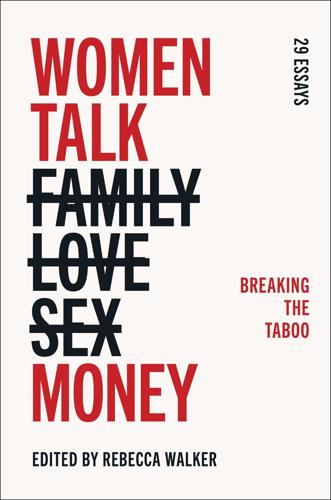
Women Talk Money: Breaking the Taboo
by
Rebecca Walker
Published 15 Mar 2022
I remember, too, the feeling of humiliation and shame that tinged my mother’s anger, her helplessness at seeing her children falsely accused and not having the American words to tell him to fuck off. That offered another lesson years later, when stories emerged of Asian American shopkeepers racially profiling their Black customers. Such racist indignities—the thousands of cuts by microaggressions—inflict deep wounds and trigger justifiable rage that can be channeled into mass action. Seeing the racism that my mother and father endured just trying to get by, I absorbed the imperative of calling out and working to end systemic racism and all oppressions. My mom didn’t have to tell me how precious each cent was to our family.
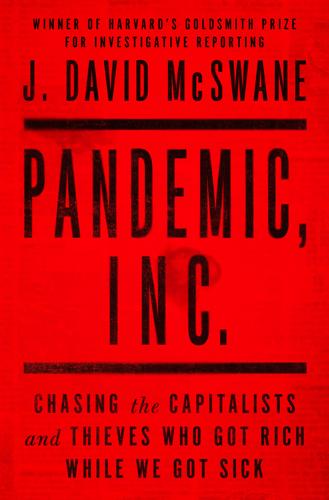
Pandemic, Inc.: Chasing the Capitalists and Thieves Who Got Rich While We Got Sick
by
J. David McSwane
Published 11 Apr 2022
“Oh, wow, I would have guessed older, you know.” “Thanks?” “I just mean out here we worry about these things and have cosmetics and everything. So, I don’t look fifty.” He paused in solemn repose. “I’m an LA fifty,” which he estimated looked about fifteen years younger than fifty elsewhere. Despite this microaggression, I liked Zelonka. I admired his pluck. He was an odd guy, maybe an unlikely and bemused hero à la Ace Ventura or any Keanu Reeves character. Or he could have been a midlevel Bond villain. I wasn’t sure yet which he was, and something told me neither was he. Like many others in the burgeoning underground mask business, Zelonka didn’t have expertise in the medical supply chain.
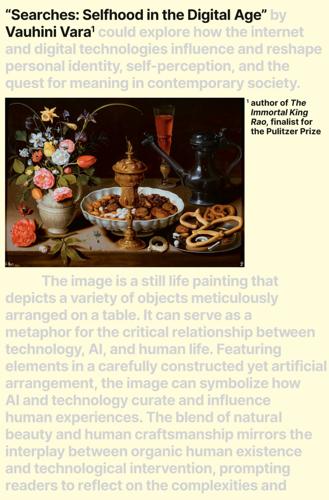
Searches: Selfhood in the Digital Age
by
Vauhini Vara
Published 8 Apr 2025
For GPT-3, OpenAI used a different approach, which included training material from Wikipedia—whose contributors, as Bender and Gebru pointed out, are even more disproportionately male than on Reddit—and from a couple of mysterious book collections whose details weren’t disclosed. Bender and Gebru wrote that biases in this material could be amplified in text produced by the AI models trained on it. People who then used those models could be faced with microaggressions, or even overtly abusive language; be introduced to stereotypes about others; or have their existing stereotypes reinforced. The paper, for reasons that are contested, caused tension between Gebru and her boss, Jeff Dean, the head of Google’s AI efforts, leading to Gebru’s departure. Dean said Gebru resigned; Gebru said she was fired.
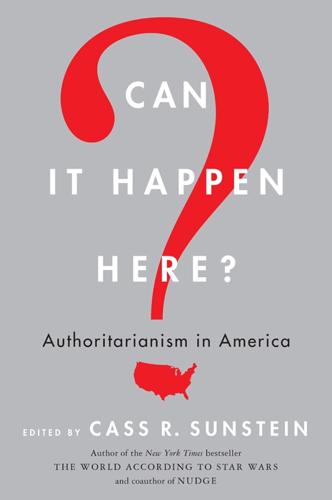
Can It Happen Here?: Authoritarianism in America
by
Cass R. Sunstein
Published 6 Mar 2018
As they see it, policing speech and behaviors offensive to their constituents enhances study and work environments; it levels an economic, social, and intellectual playing field that has long been tilted in favor of whites, men, and heterosexuals.8 In the 2010s, political correctness shifted emphasis from suppressing hate speech targeted at its constituents to creating safe spaces that shelter them from discomforting acts and expressions. The task requires curbing microagressions, which are intrinsically trivial acts that cause unintentional harm. Examples include a smile perceived as an affront, a question treated as an act of exclusion, boredom attributed to stereotyping, and an idea treated as insensitivity. Microaggressions can be limited by issuing trigger warnings whenever a topic potentially upsetting to an oppressed constituency is on the agenda. Consider an assignment to read a novel on the tribulations of an immigrant family. A trigger warning would let victims of anti-immigrant speech avoid the relevant content.9 The critics of identitarian political correctness consider it a system of oppression that shields unjust, inefficient, and even counterproductive identity-based policies from public scrutiny.
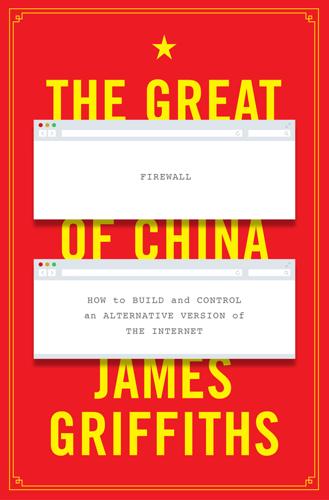
The Great Firewall of China
by
James Griffiths;
Published 15 Jan 2018
In a Starbucks near the Ministry of Foreign Affairs in Beijing, I met a woman from Xinjiang, who asked that I call her Gu Li, the Uyghur equivalent of Jane Doe. Gu moved to the capital shortly after she was born, in 1985, and has lived there ever since. She grew up in a Han community, was not particularly religious, and was as integrated into Chinese society as anyone can be. But her experiences of daily discrimination and micro-aggressions were characteristic of life for many Uyghurs. Seeming more exhausted than angry, she told me about baristas writing ‘foreign friend’ on her cup rather than bothering to try to spell her Uyghur name, and the time when she was ordered to come to the front of class in kindergarten so the teacher could point at her facial features to show other students “what a Uyghur looked like”.41 Gu also expressed frustration with the depiction of Uyghurs in the Chinese media: as backwards, overly religious, and dangerous.

The Equality Machine: Harnessing Digital Technology for a Brighter, More Inclusive Future
by
Orly Lobel
Published 17 Oct 2022
Virtual reality experiences like these are increasingly being created to tackle racial, gender, LGBTQ+, and socioeconomic biases. In one called 1000 Cut Journey, designed by Stanford’s Bailenson and Courtney Cogburn of the Columbia University School of Social Work, users experience life from the perspective of Michael Sterling, a Black man experiencing racial microaggressions. In Becoming Homeless, designed by Stanford’s Virtual Human Interaction Lab, participants engage in an immersive VR experience of days in the life of someone who can no longer afford a home. The description reads, “Interact with your environment to attempt to save your home and to protect yourself and your belongings as you walk in another’s shoes and face the adversity of living with diminishing resources.”
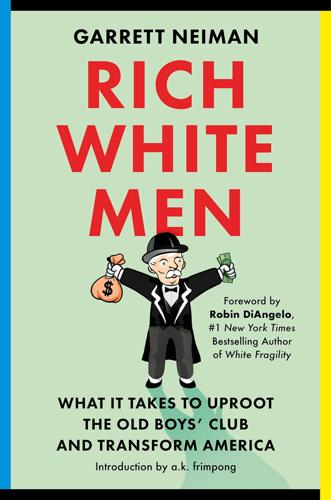
Rich White Men: What It Takes to Uproot the Old Boys' Club and Transform America
by
Garrett Neiman
Published 19 Jun 2023
Boundaries don’t just matter in interpersonal relationships; they shape and define the culture of institutions, too, in both healthy and toxic ways. For example, cultures that minimize the experiences of those from marginalized backgrounds are also toxic. In his 2019 book How to Be an Antiracist, historian Ibram X. Kendi recasts what are often described as “microaggressions” as racial abuse. “Abuse accurately describes the action,” Kendi writes, “and its effects on people: distress, anger, worry, depression, anxiety, pain, fatigue, and suicide.”19 When I read that initially, I thought that Kendi was communicating with a hyperbolic flair to make a point. But as I learned more about what verbal abuse looks like and how perpetrators justify it, I came to see that Kendi was right.
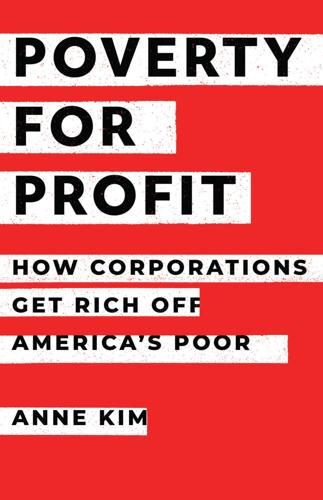
Poverty for Profit
by
Anne Kim
Kidney patient Patrick Gee, who is Black, says he believes many minority patients must fight stereotypes to access home-based modes of treatment. “My dialysis nephrologist told me, ‘You can do peritoneal because you have a PhD and you’re smart enough to be in compliance,’” Gee recalls. “And I’m listening to that and hearing the micro-aggression.”264 Just 9.6 percent of kidney-failure patients used in-home dialysis or peritoneal dialysis in 2020; these patients were more likely to be white.265 The Wrong Kind of Innovation To its credit, the federal government has launched some recent initiatives to reform the treatment of kidney disease and improve patients’ lives.
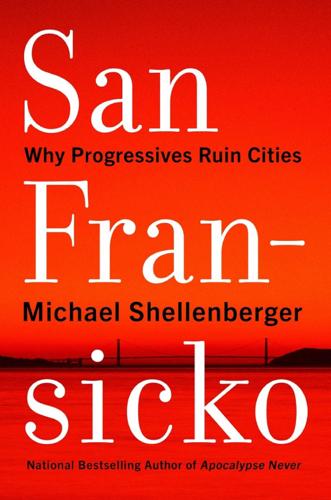
San Fransicko: Why Progressives Ruin Cities
by
Michael Shellenberger
Published 11 Oct 2021
Greg Keraghosian, “SF School Board Pauses Renaming 44 Schools, Promises to Consult Historians in Future,” SF Gate, February 21, 2021, www.sfgate.com; Jill Tucker, “SFUSD Faces Lawsuit over Controversial Renaming of 44 Schools,” San Francisco Chronicle, March 19, 2021, www.sfchronicle.com. 51. Simeon Wade, Foucault in California: A True Story—Wherein the Great French Philosopher Drops Acid in the Valley of Death (Berkeley, CA: Heyday, 2019), 105. 52. Ibid., 69. 53. Bradley Campbell and Jason Manning, The Rise of Victimhood Culture: Microaggressions, Safe Spaces and the New Culture Wars (Cham, Switzerland: Palgrave Macmillan, 2018), 22. 54. Jim Logan, “For Shame,” Current, University of California, Santa Barbara, February 22, 2016, www.newsucsb.edu. 55. Wade, Foucault in California, 72. 56. “SF School Board Votes to Change Admissions Process for Lowell High School,” NBC Bay Area, February 10, 2021, www.nbcbayarea.com. 57.

Rationality: What It Is, Why It Seems Scarce, Why It Matters
by
Steven Pinker
Published 14 Oct 2021
Caldeira, K., Emanuel, K., Hansen, J., & Wigley, T. 2013. Top climate change scientists’ letter to policy influencers. CNN, Nov. 3. https://www.cnn.com/2013/11/03/world/nuclear-energy-climate-change-scientists-letter/index.html. Campbell, B., & Manning, J. 2018. The rise of victimhood culture: Microaggressions, safe spaces, and the new culture wars. London: Palgrave Macmillan. Caplan, B. 2017. What’s wrong with the rationality community. EconLog, Apr. 4. https://www.econlib.org/archives/2017/04/whats_wrong_wit_22.html. Carroll, L. 1895. What the tortoise said to Achilles. Mind, 4, 178–80. Carroll, L. 1896/1977.
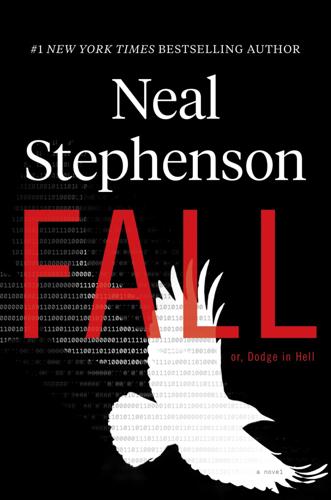
Fall; Or, Dodge in Hell
by
Neal Stephenson
Published 3 Jun 2019
Ted had returned from inspecting the lambs. He set his weary bones down into a folding chair and indicated that the visitors should do likewise. Phil preferred to stand; he unzipped his paper coverall down to his navel, parted it to expose his chest, and stood sideways to them trying to catch the breeze. Sophia cataloged it as a microaggression, the hundredth today, not even worth noticing next to the twenty-story macroaggression that Ted and his crew were building. You couldn’t wear underwear beneath the bunny suit because that would miss the whole point unless your underwear was made of Levitican-certified unmingled fiber, and hers wasn’t, so her bra was down in a locker at the checkpoint and she couldn’t unzip as Phil was doing.
…
It was too small and far away to be seen with the naked eye. Apparently, though, his goggles were running some kind of augmented ware that enabled him to know of its existence and, in some sense, “see” it. He slid them up on his backward baseball cap and turned toward Pete. “What’s the word, boss?” Microaggression. Sophia had hired Tom and Kevin to escort them to Sioux City, but now that a middle-aged white guy had entered the picture, suddenly he was “boss.” Sophia was getting ready to say something when she noticed Pete watching her face wryly. Pete held up a placating hand. “I have taken the liberty of hiring these fellas for the extra job that needs doing,” he explained.
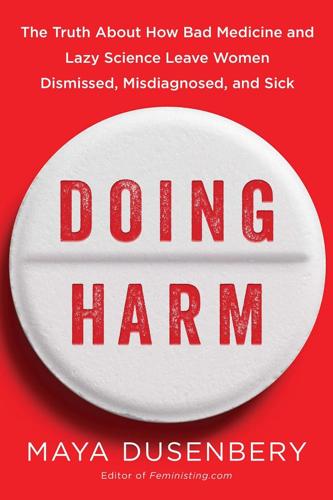
Doing Harm: The Truth About How Bad Medicine and Lazy Science Leave Women Dismissed, Misdiagnosed, and Sick
by
Maya Dusenbery
Published 6 Mar 2018
Or the queer woman whose orthopedist asked if the swelling in her dislocated finger had gone down enough for “Mr. Right to put a ring on it.” Or the mom of a child with physical and intellectual disabilities who noticed that the only item listed in her daughter’s chart under “Developmental Concerns” was “Mother works outside the home.” These kind of overt microaggressions may be less common these days, or at least easier to brush off in an era when women have more power. But it is the more subtle stories that are more pervasive—and more dangerous, because the gender bias they reflect is harder to pin down if you see each story only in isolation. The doctor who didn’t listen—but perhaps that’s just how he is with everyone?

The Rise and Fall of the Neoliberal Order: America and the World in the Free Market Era
by
Gary Gerstle
Published 14 Oct 2022
Wrestling audiences delighted in the determination of their heroes to impose their will on opponents and their willingness to use any means, fair and foul, to do so. Trump’s style of populist politics took shape in this aggressive world of staged male combat, a world always teetering—tantalizingly, in the view of many supporters—on the edge of violence. As multicultural America became obsessed with tracking micro-aggressions, those immersed in this parallel universe of professional wrestling delighted in the performance of extravagant macro-aggressions. Trump loved this world. His deep connection to this world, Michael Cohen observed, put him in close touch “with the tastes of baseball-cap wearing, pickup-driving men who otherwise would seem a million miles away from Trump’s pampered and gilded gold existence.”49 In each of Trump’s three beliefs—that free trade and open borders were harming America, that America should privilege its people of European descent, and that America’s true strength lay in its professional wrestling heartland far more than in the aspirations of America’s coastal elites—we can see an incipient attack on America’s neoliberal order.

Empire of AI: Dreams and Nightmares in Sam Altman's OpenAI
by
Karen Hao
Published 19 May 2025
Gebru chimed in on the email thread, urging her colleagues to temper their excitement, and pointed out the model’s serious shortcomings. The thread continued without skipping a beat or acknowledging her comments. Around that time, a handful of Black Google Research employees had given a company presentation about the microaggressions they faced in the workplace that left them feeling voiceless and how their colleagues could help build a more inclusive culture. Gebru felt exhausted; nothing had changed. She fired off a second email, this time more piercing. She called out her colleagues for ignoring her and emphasized how dangerous it was to have a large language model trained on Common Crawl, which included online internet forums such as Reddit.

Seeking SRE: Conversations About Running Production Systems at Scale
by
David N. Blank-Edelman
Published 16 Sep 2018
Activism and Change Within a Company Not all activism looks like protesting in the streets. As technology workers, we possess influence that can be spent to the benefit of our coworkers, our customers, and the world at large. The simple steps include changes such as revising technical documentation to remove microaggressions or changing service-level indicators to measure availability for a wider range of users. More complex efforts include doing product advocacy in our role as trusted advisors in the design and launch process of software. But what about if you aren’t heard at first? If you encounter resistance from colleagues or from management in trying to address issues of equity in your company’s products, policies, or working conditions, there are several important considerations that will serve you well in advocating for equity.

Enlightenment Now: The Case for Reason, Science, Humanism, and Progress
by
Steven Pinker
Published 13 Feb 2018
Anyone who disagrees with the assumption that racism is the cause of all problems is called a racist.63 Non-leftist speakers are frequently disinvited after protests or drowned out by jeering mobs.64 A student may be publicly shamed by her dean for a private email that considers both sides of a controversy.65 Professors are pressured to avoid lecturing on upsetting topics, and have been subjected to Stalinesque investigations for politically incorrect opinions.66 Often the repression veers into unintended comedy.67 A guideline for deans on how to identify “microaggressions” lists remarks such as “America is the land of opportunity” and “I believe the most qualified person should get the job.” Students mob and curse a professor who invited them to discuss a letter written by his wife suggesting that students chill out about Halloween costumes. A yoga course was canceled because yoga was deemed “cultural appropriation.”

Wanderers: A Novel
by
Chuck Wendig
Published 1 Jul 2019
Then it could go dormant for weeks, months, sometimes even years—and then when it came back, it manifested ten times worse than it began. And it looked a little different every time: attacking different organs, the heart, the brain, the spine; affecting different limbs; conjuring unique symptoms, like facial paralysis. Racism was a little like that. Sometimes the initial symptoms were small: microaggressions here, simmering resentment there. If you dealt with it head-on, maybe you could keep it contained. If you didn’t deal with it, though, it came back with a vengeance: just like that little bacterium. Came back worse. Entrenched. So entrenched, in fact, the longer you let it go, the harder it was to control, and soon everything started to break down.

Behave: The Biology of Humans at Our Best and Worst
by
Robert M. Sapolsky
Published 1 May 2017
Yet stress researchers do not aim to eliminate, to “cure,” us of stress. It can’t be done, and even if it could, we wouldn’t want that—we love stress when it’s the right kind; we call it “stimulation.” The analogy is obvious. From massive, breathtaking barbarity to countless pinpricks of microaggression, Us versus Them has produced oceans of pain. Yet our generic goal is not to “cure” us of Us/Them dichotomizing. It can’t be done, unless your amygdala is destroyed, in which case everyone seems like an Us. But even if we could, we wouldn’t want to eliminate Us/Them-ing. I’m a fairly solitary person—after all, I’ve spent a significant amount of my life studying a different species from my own, living alone in a tent in Africa.